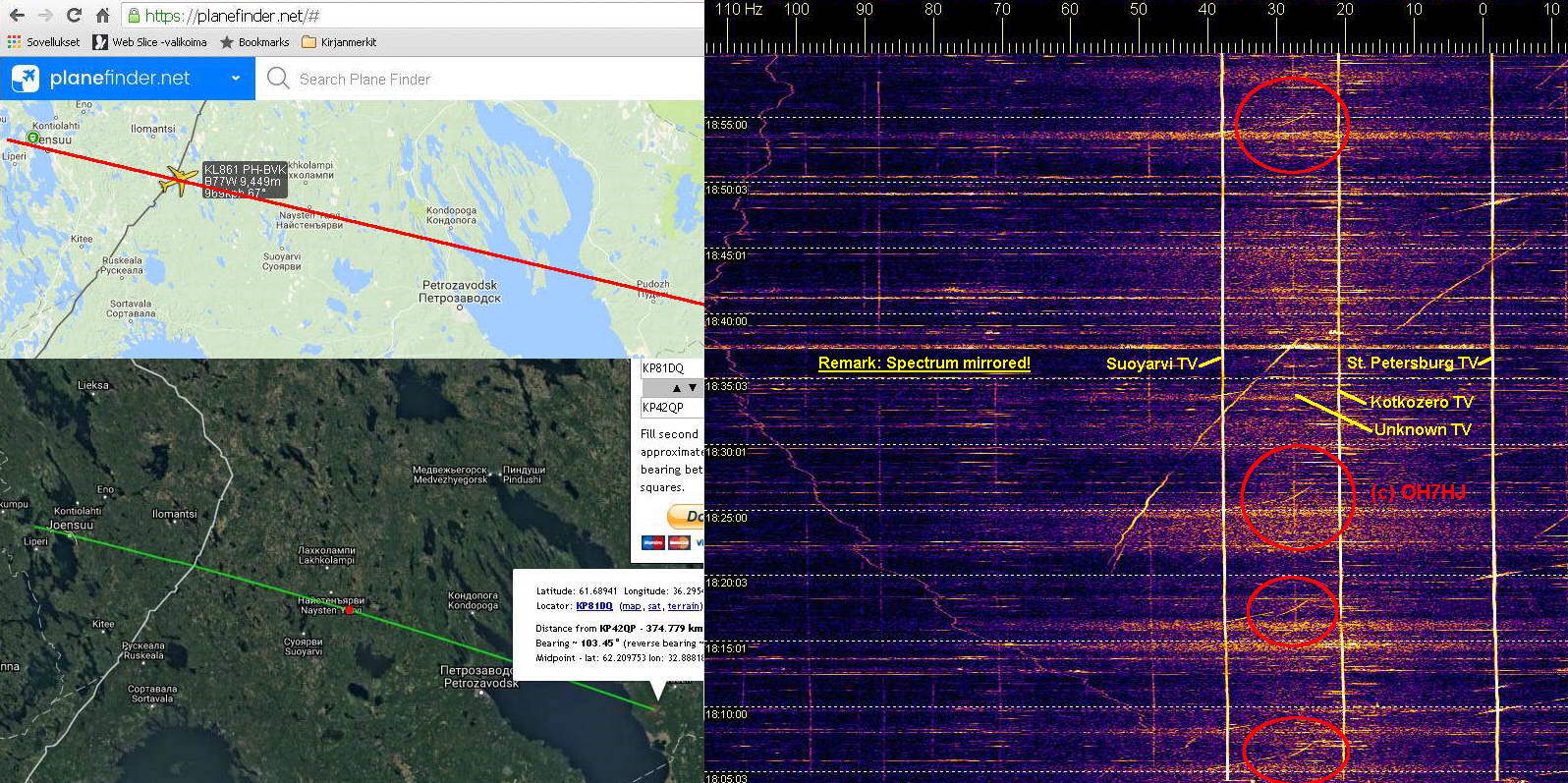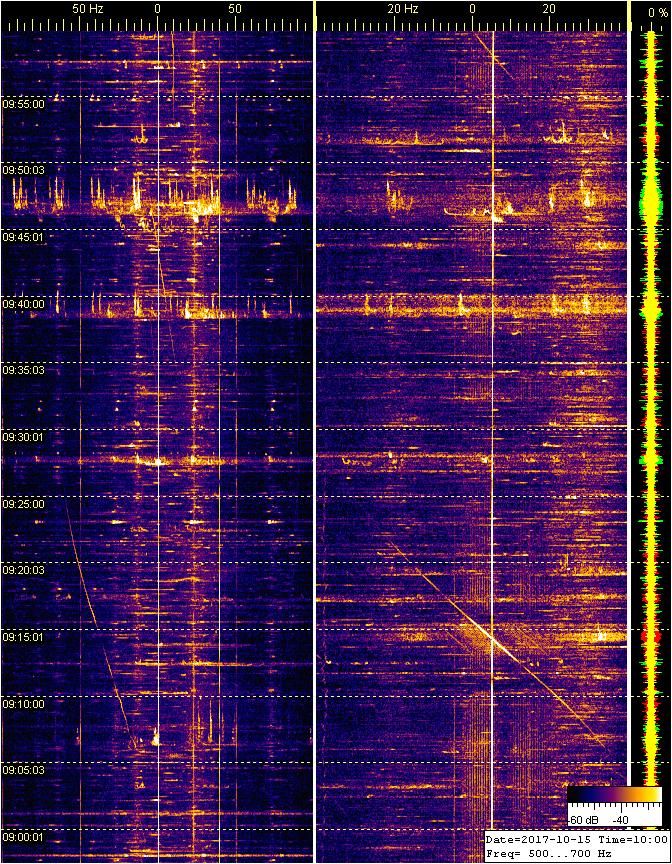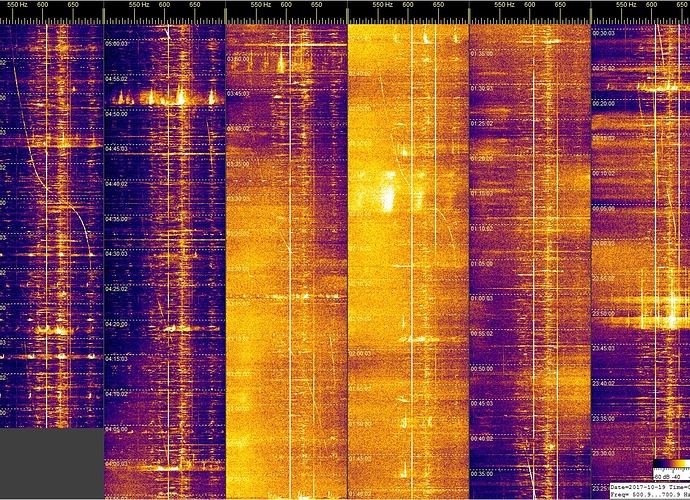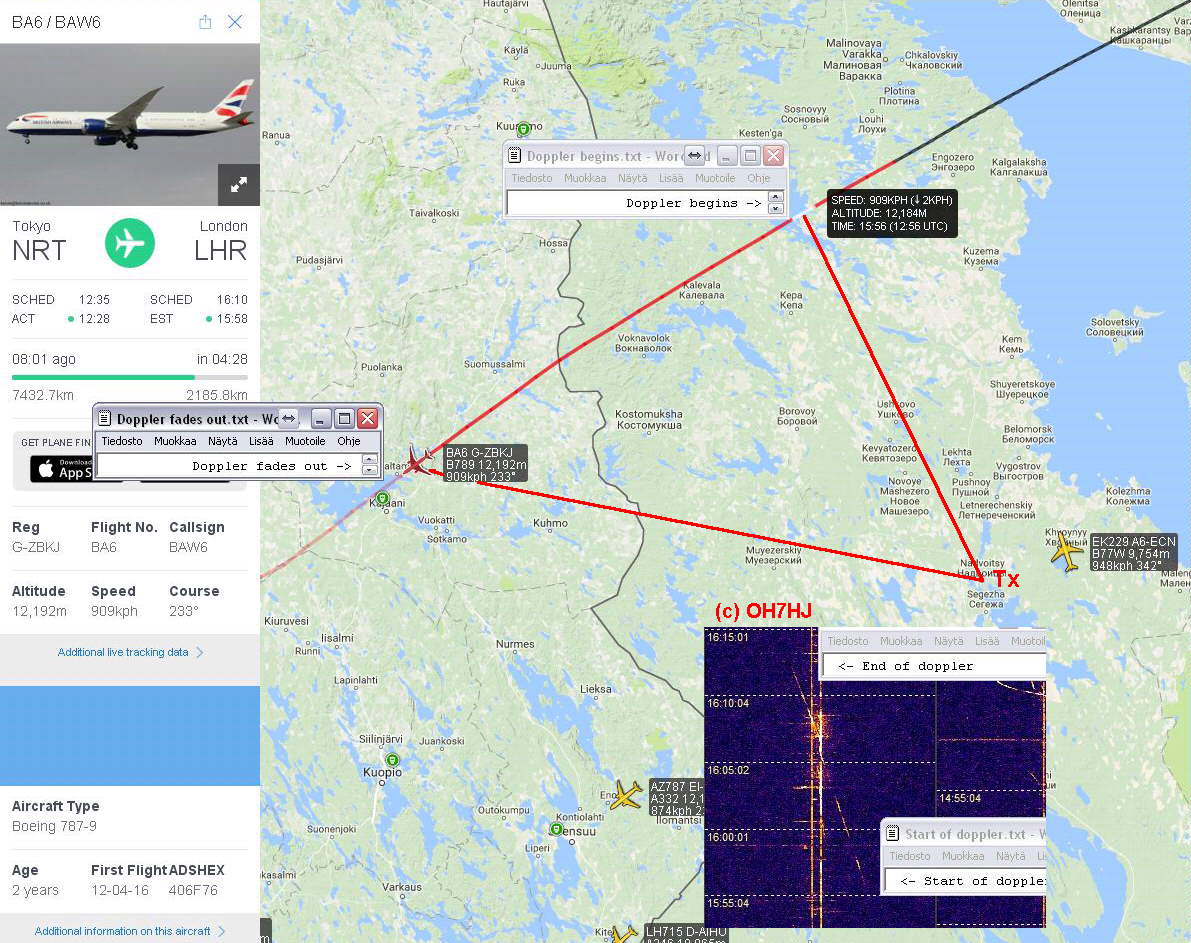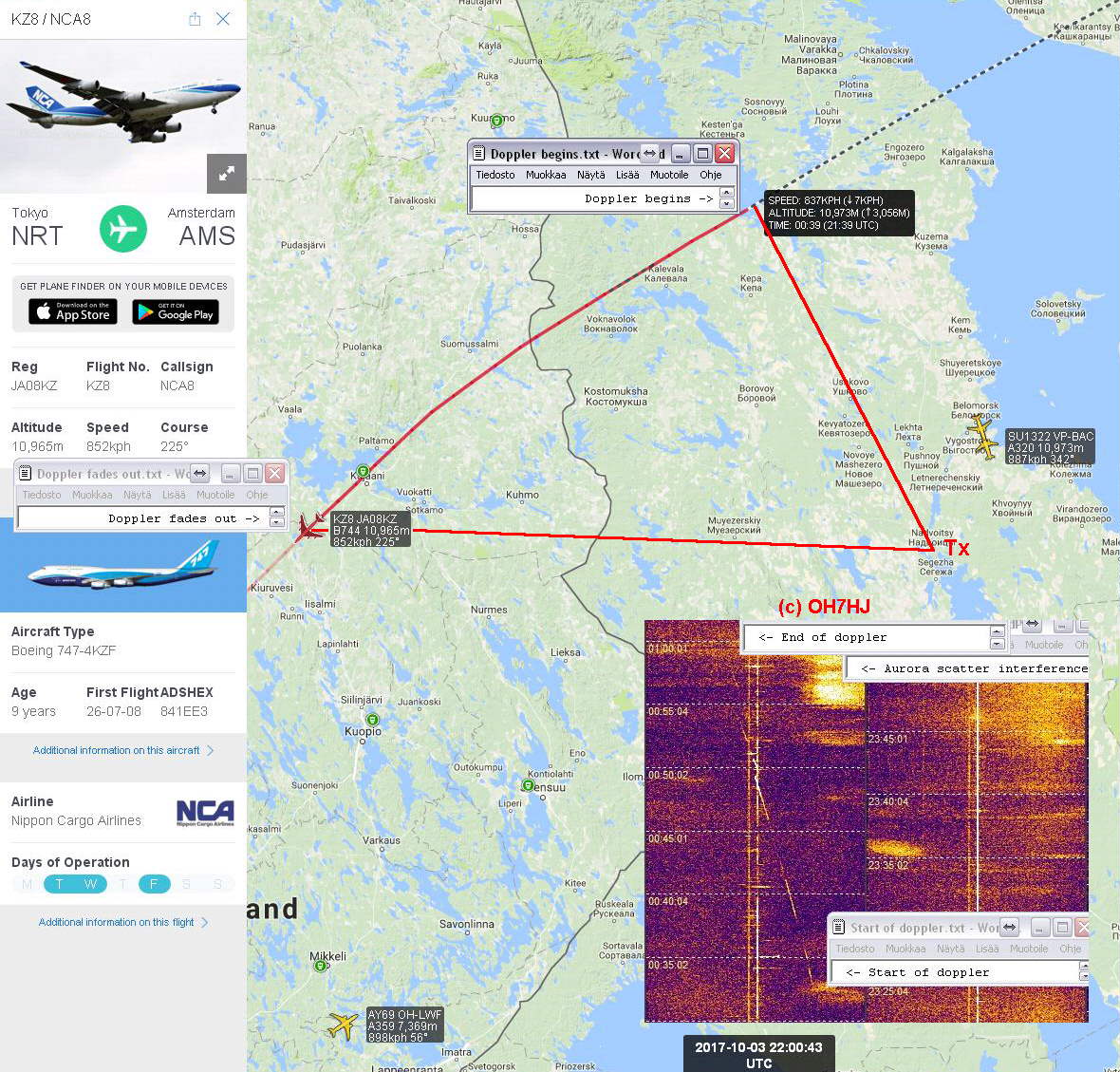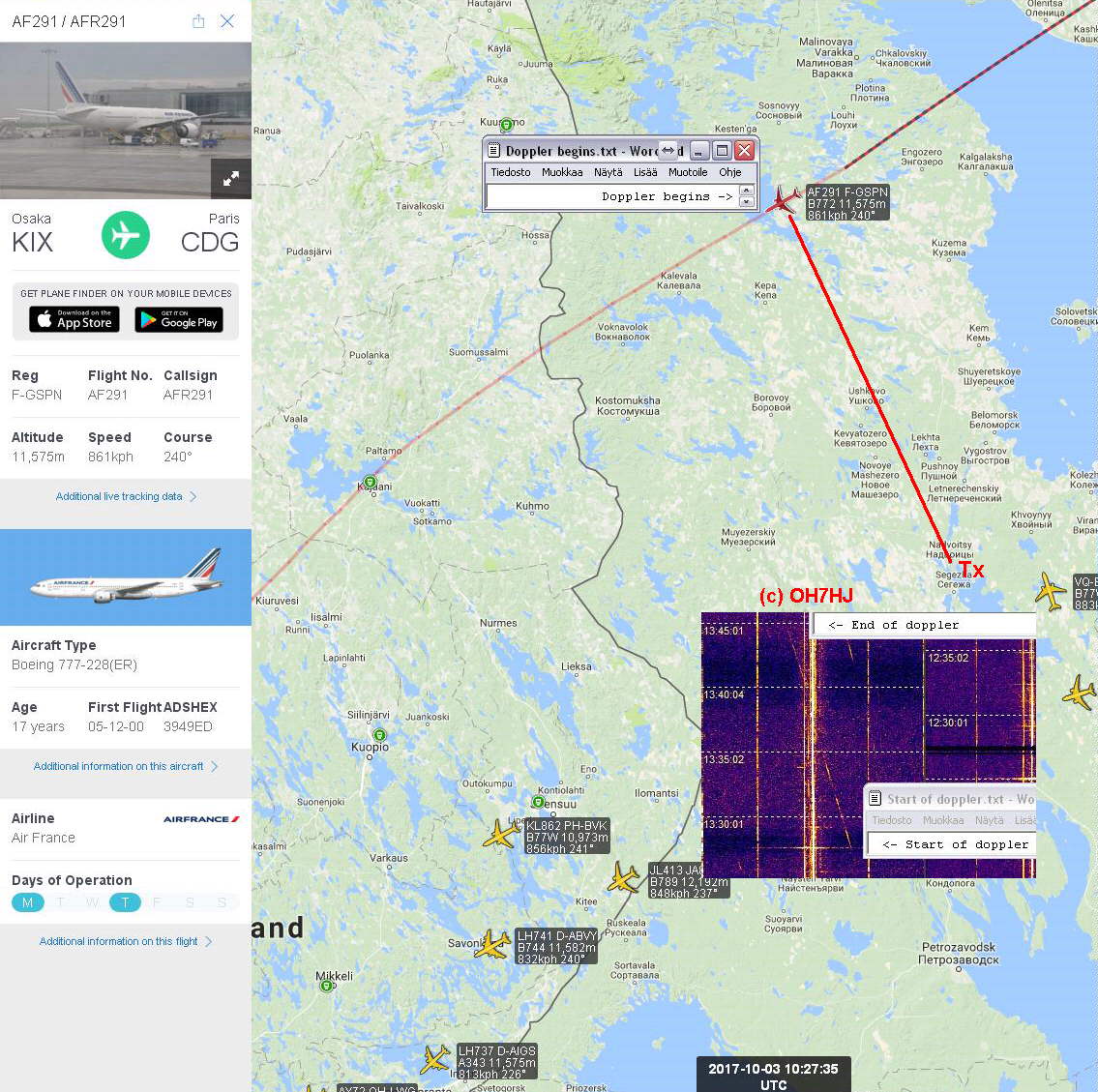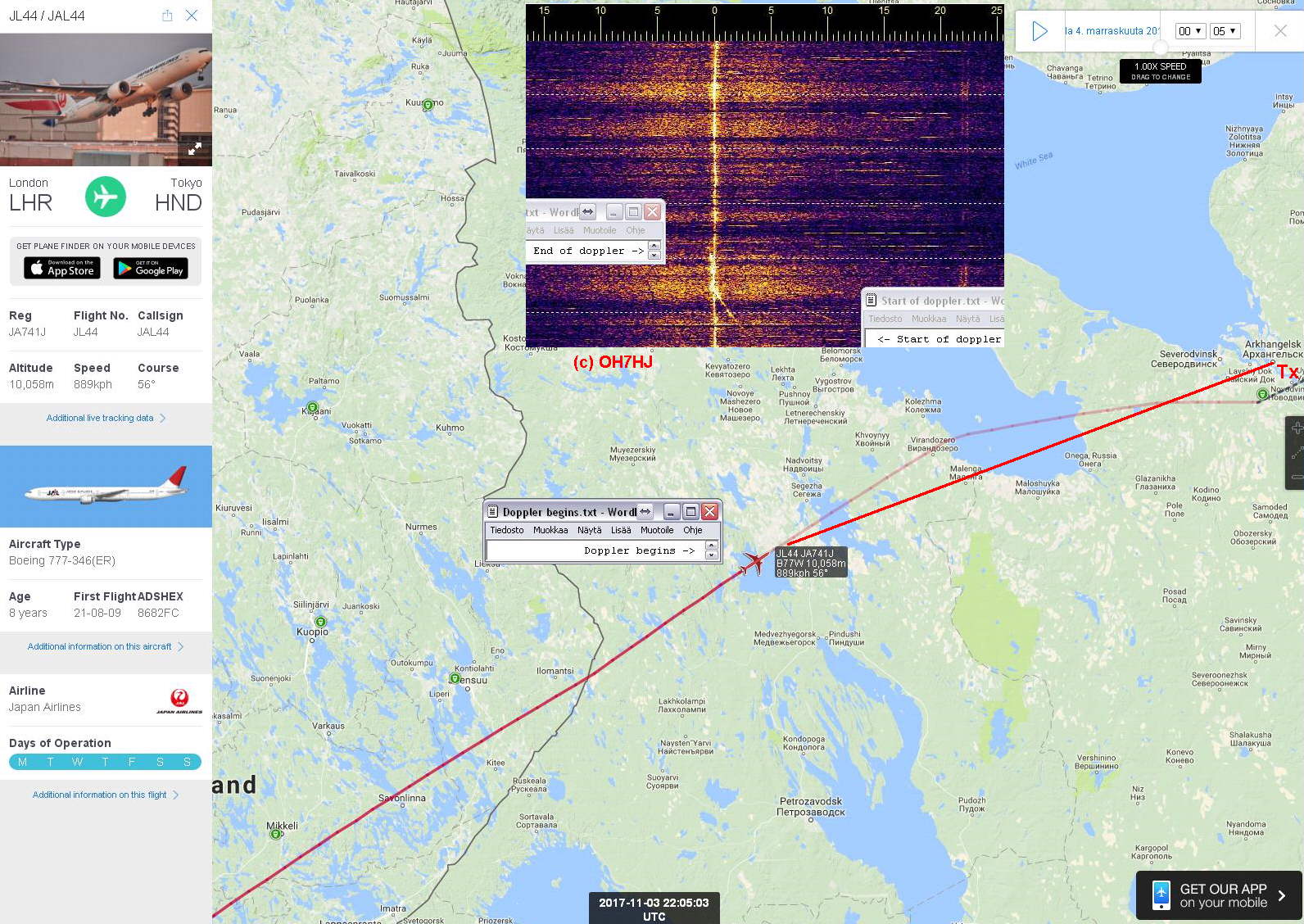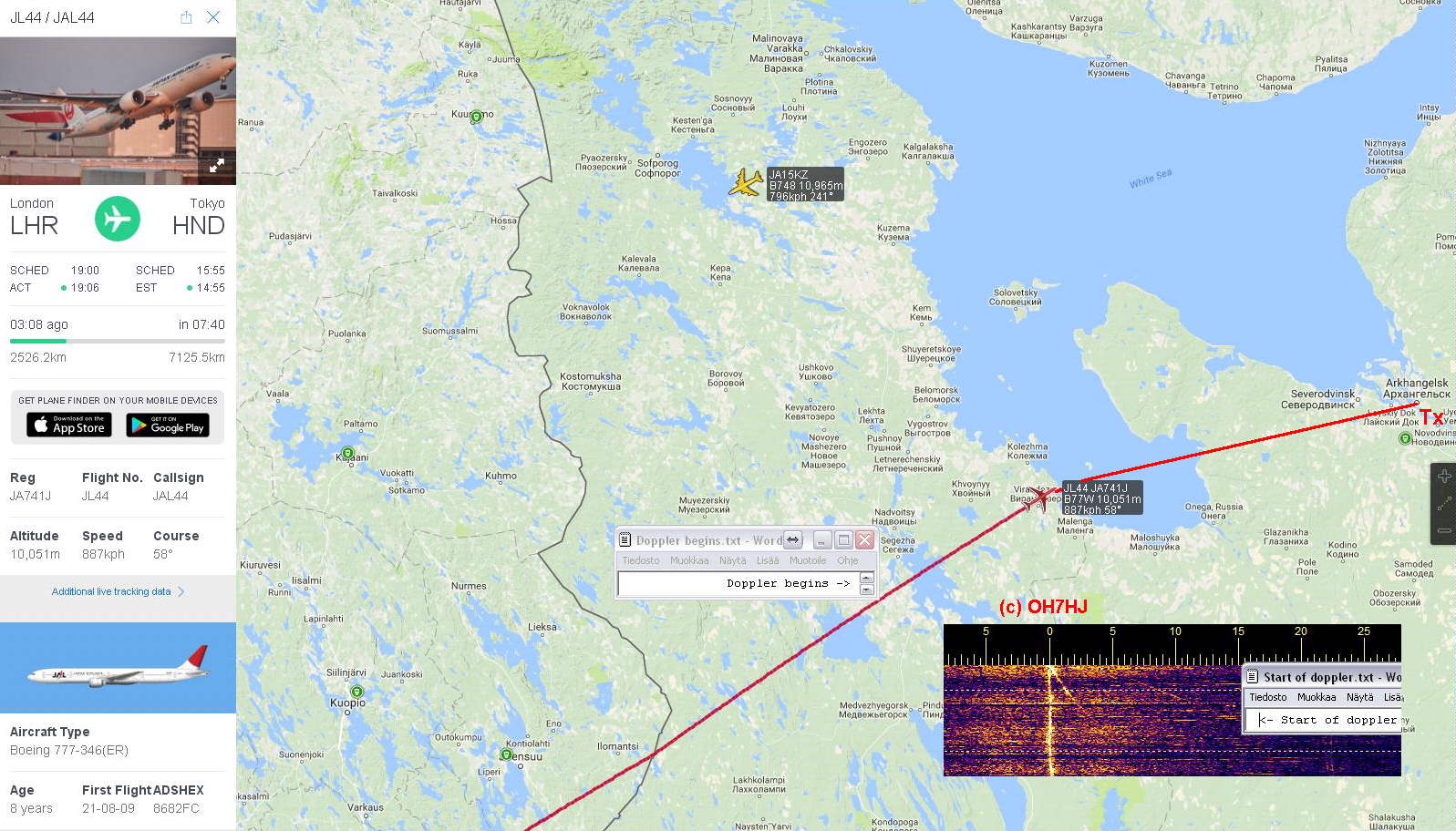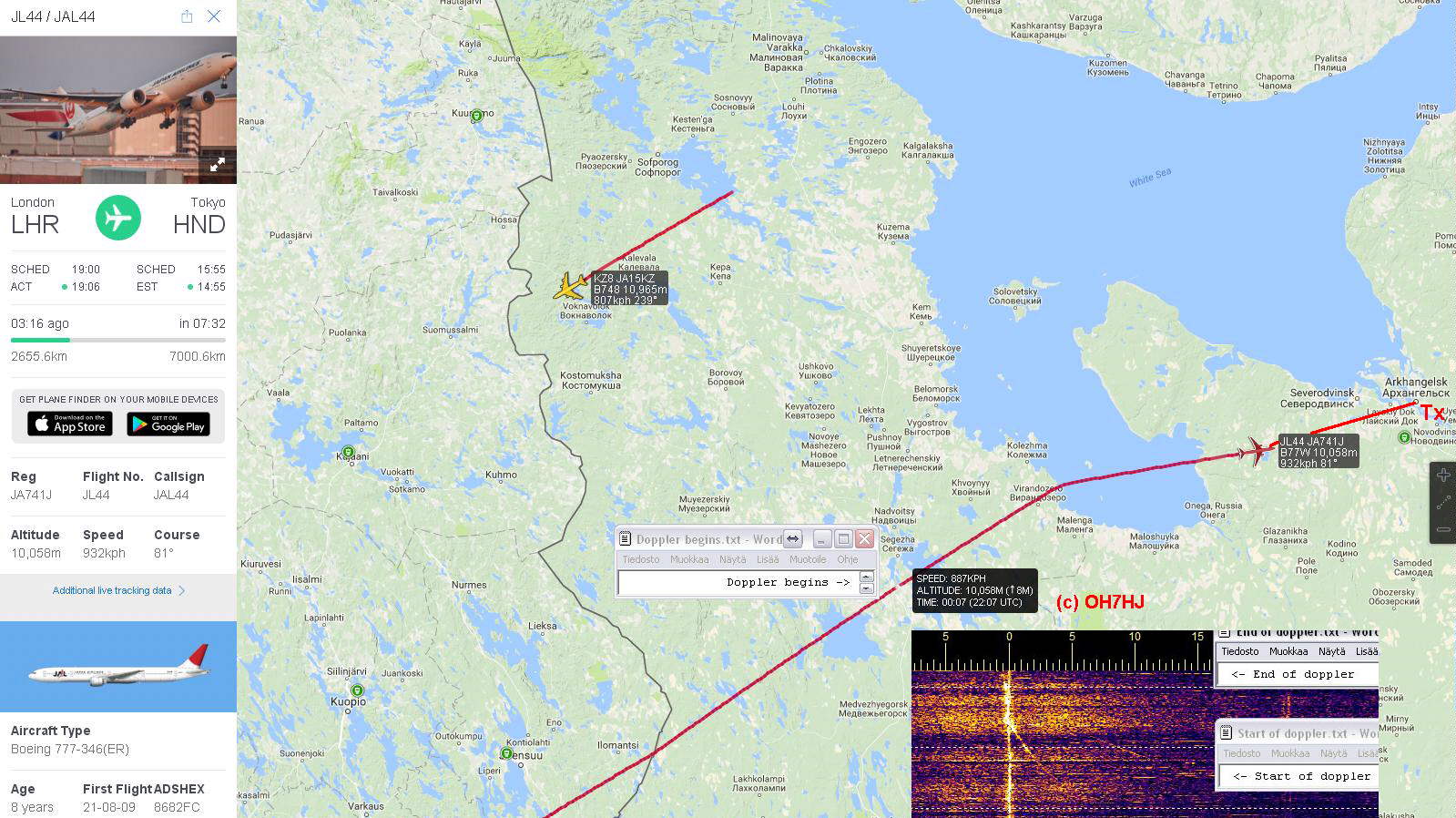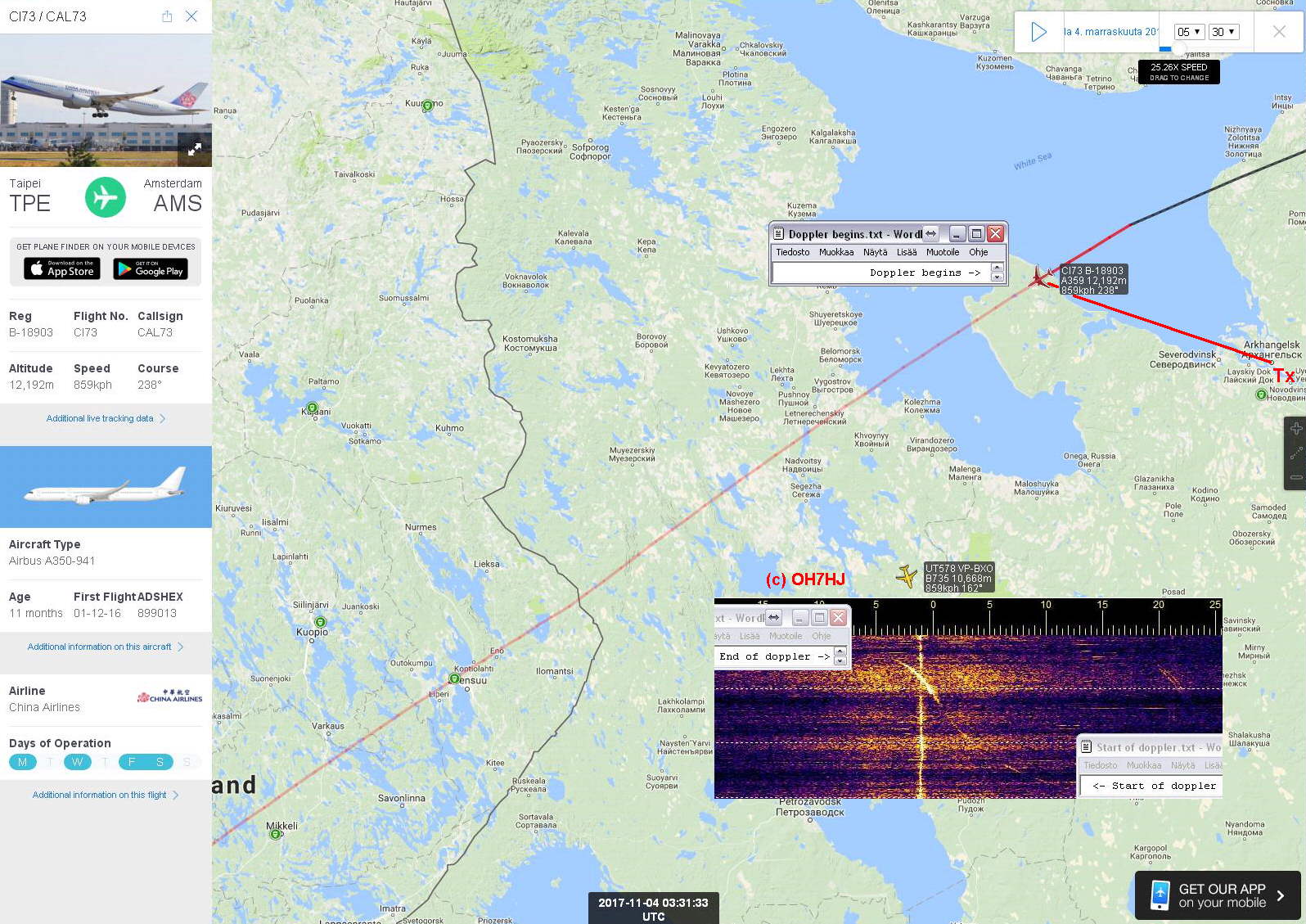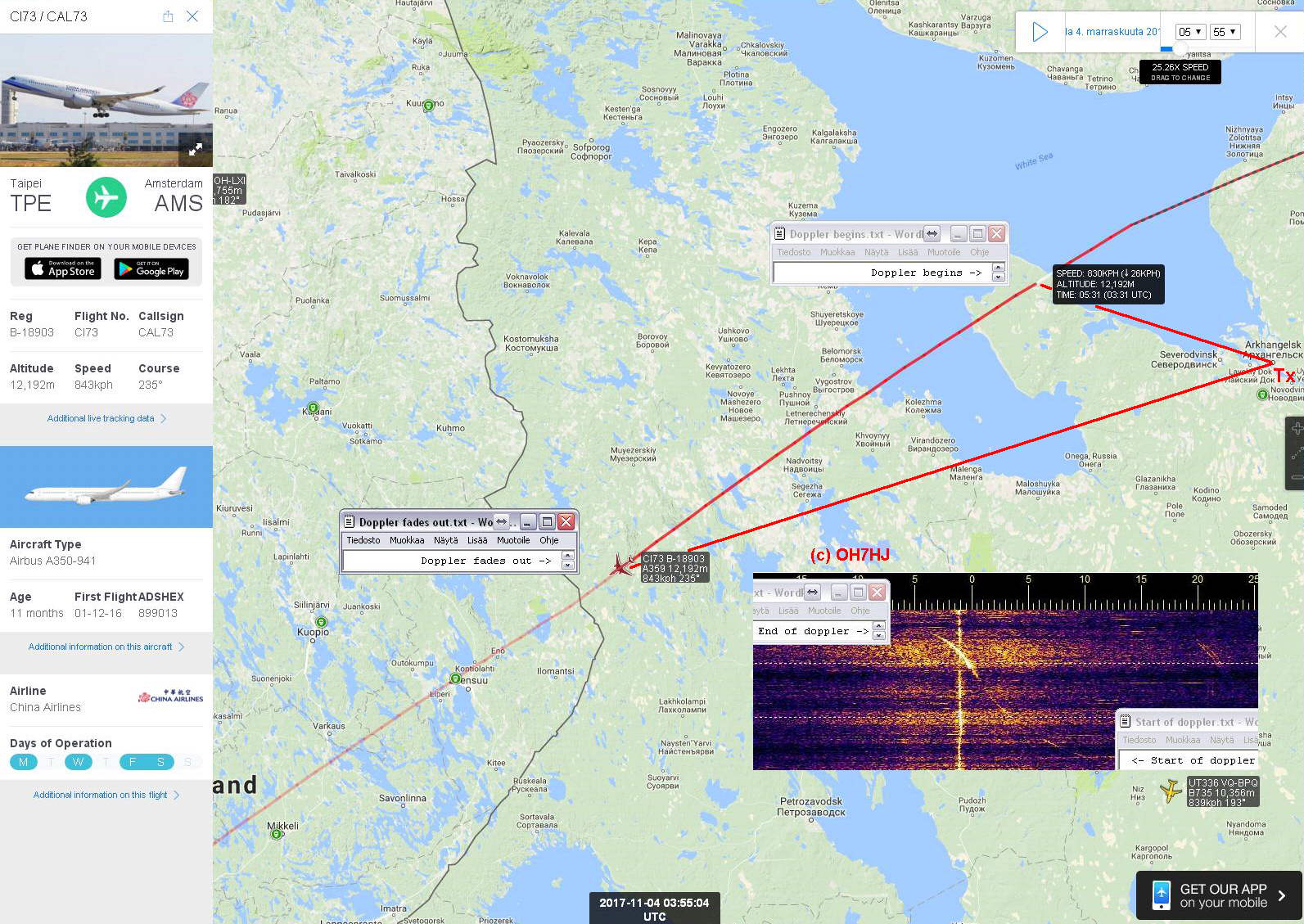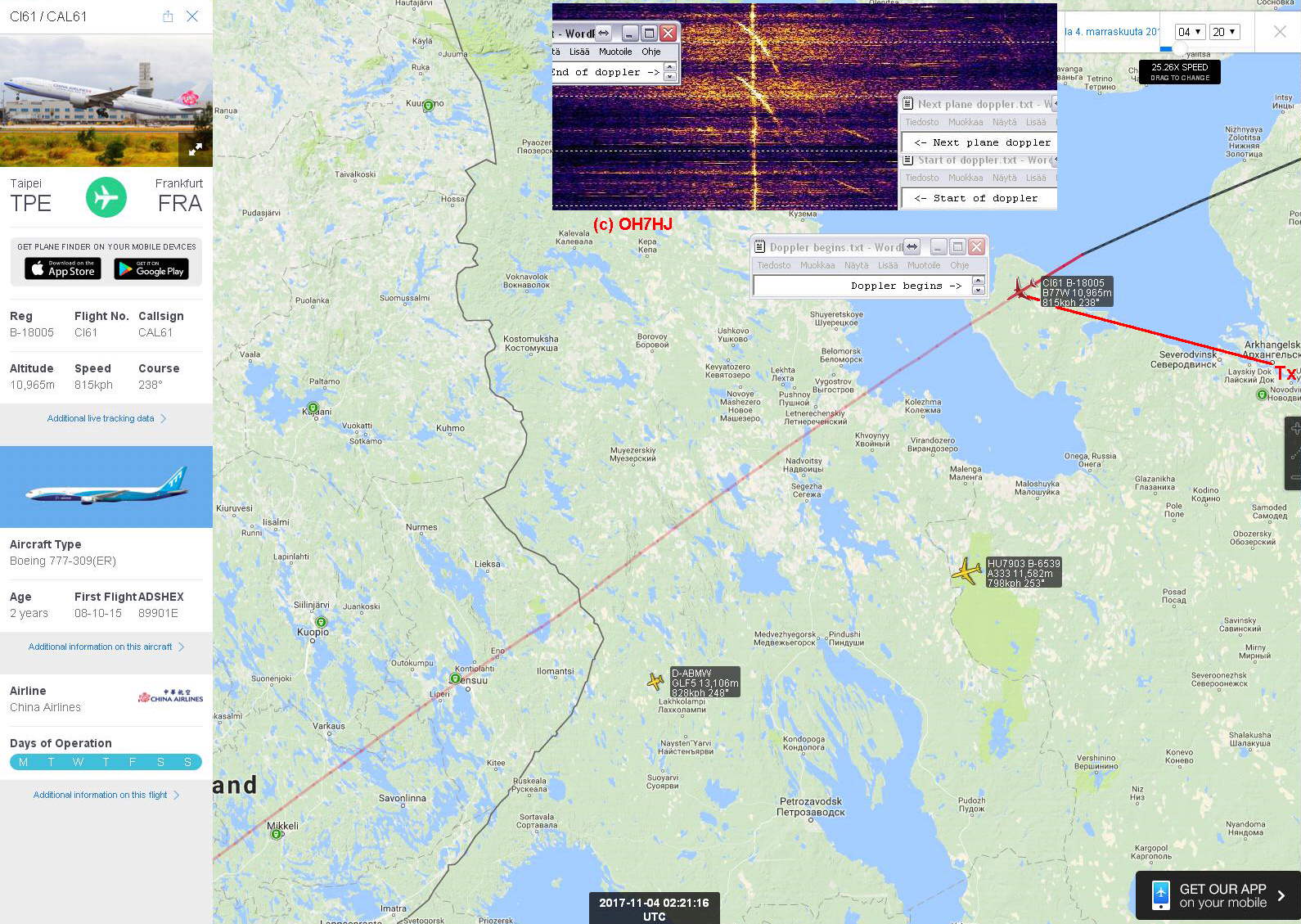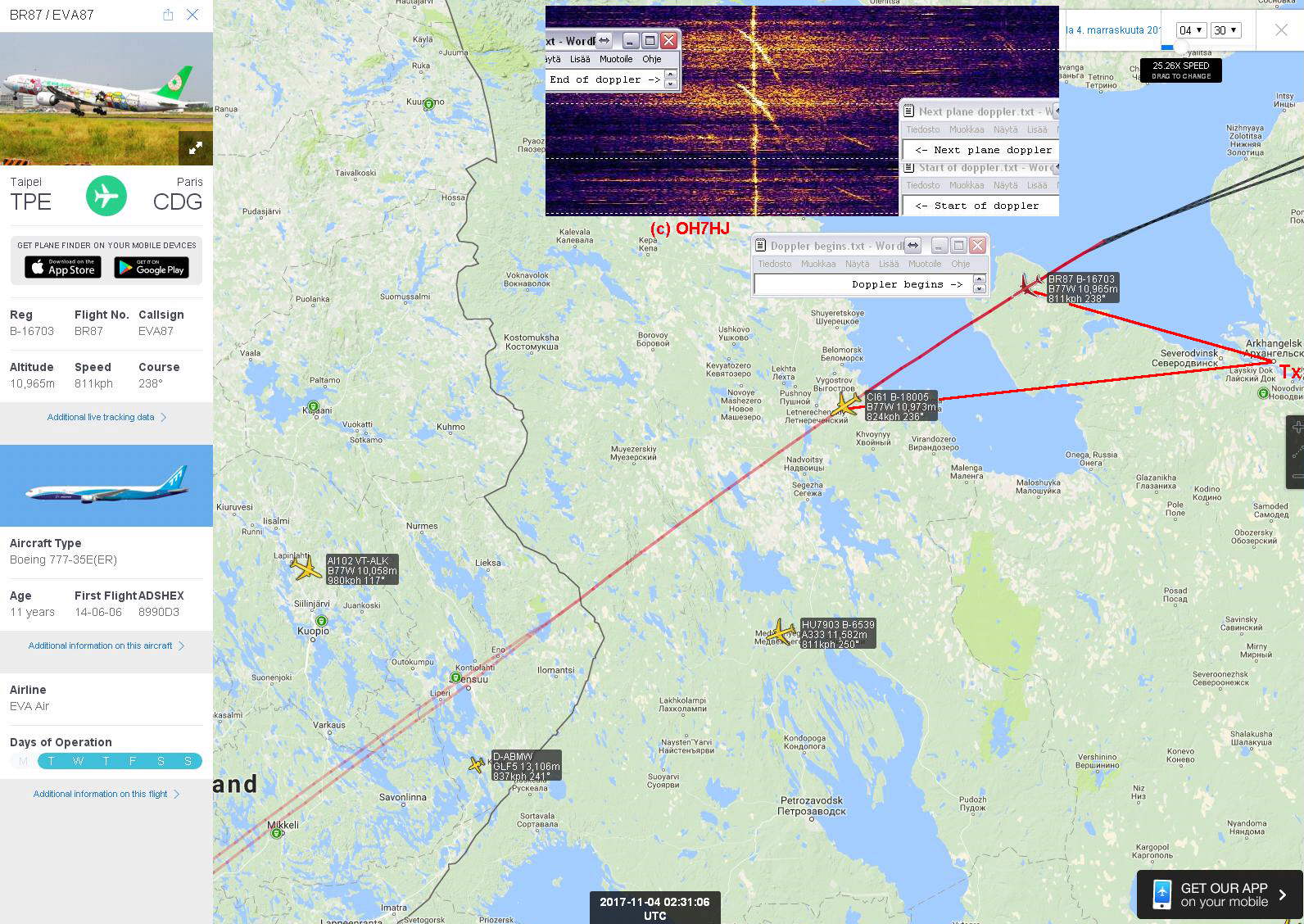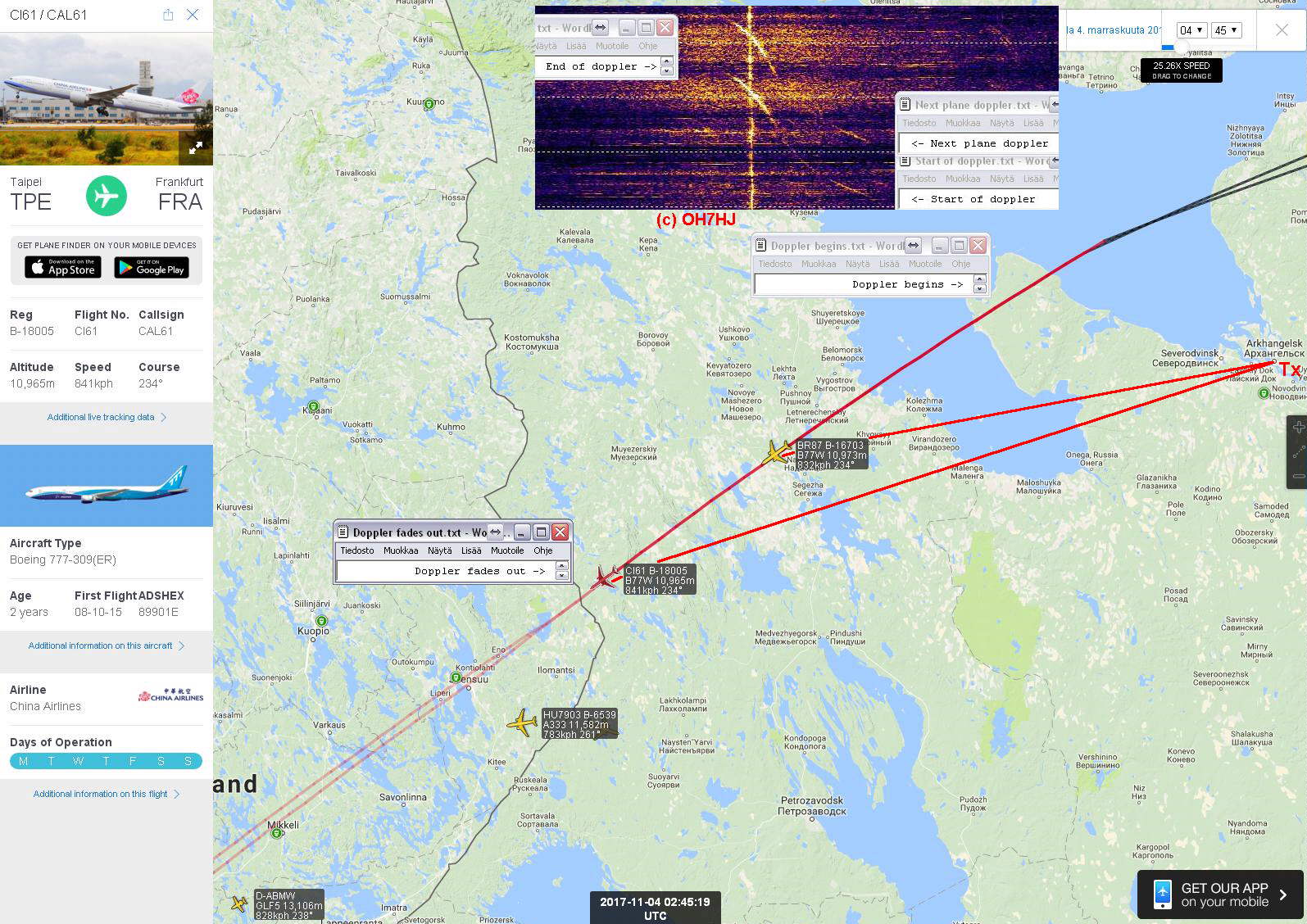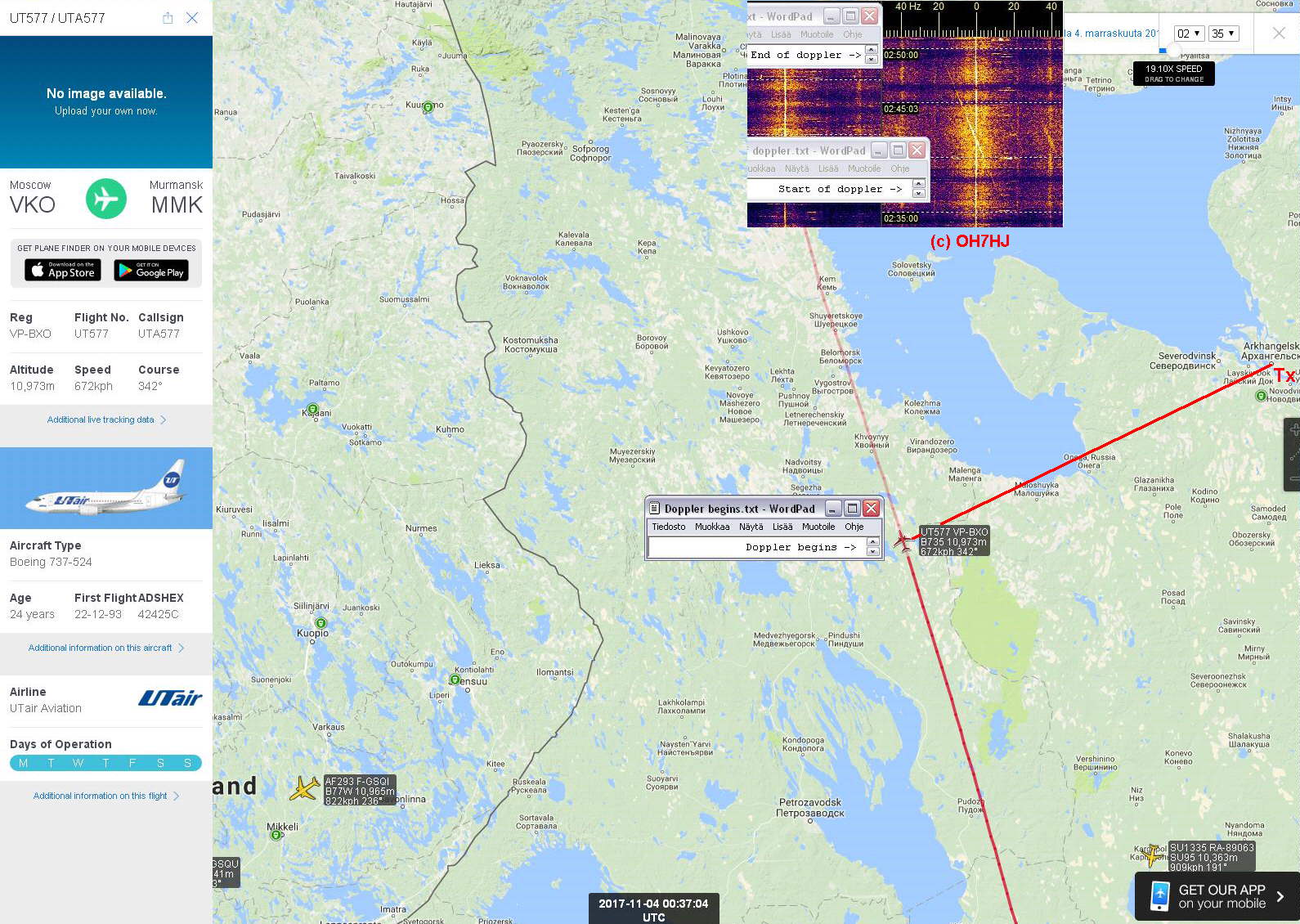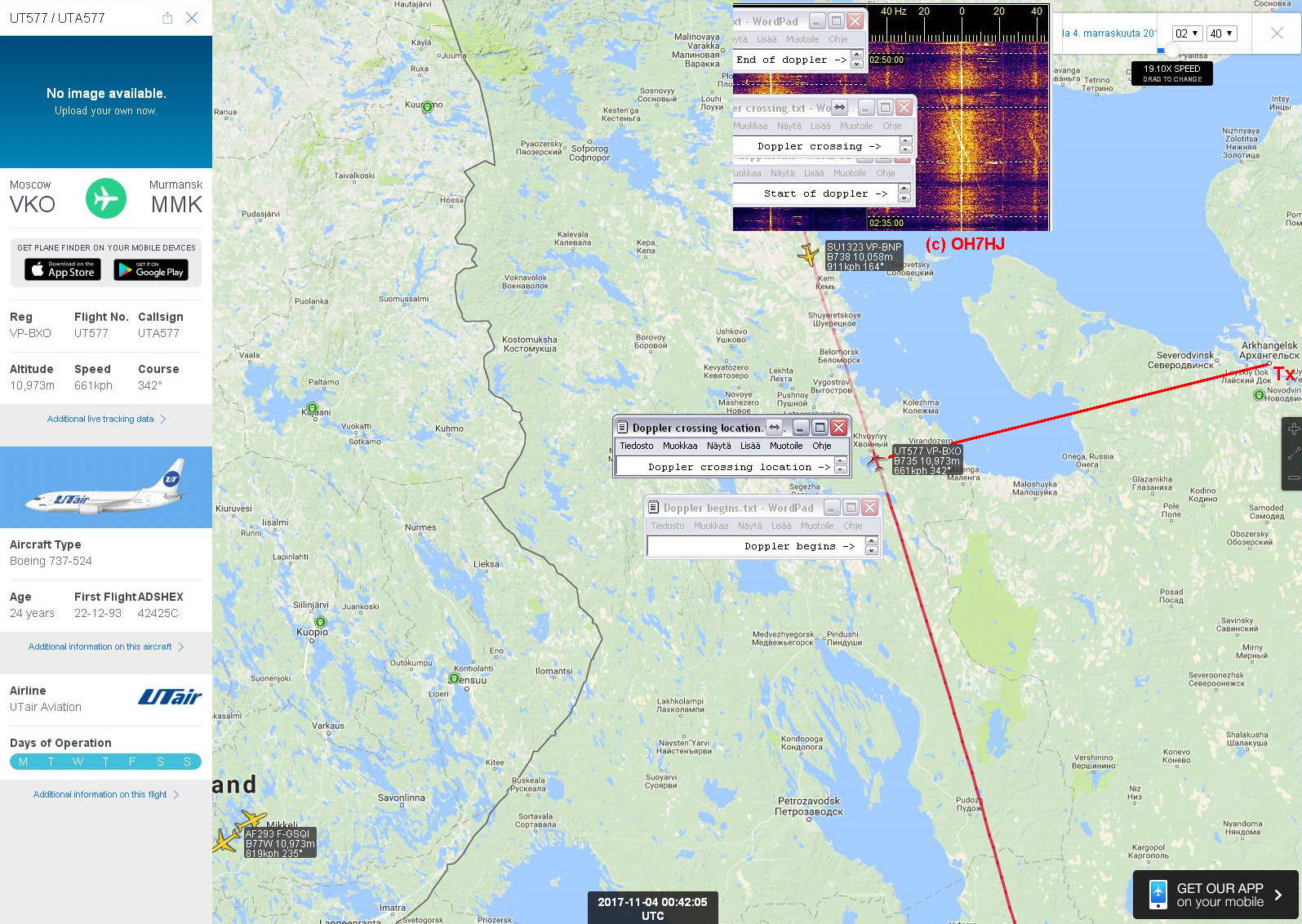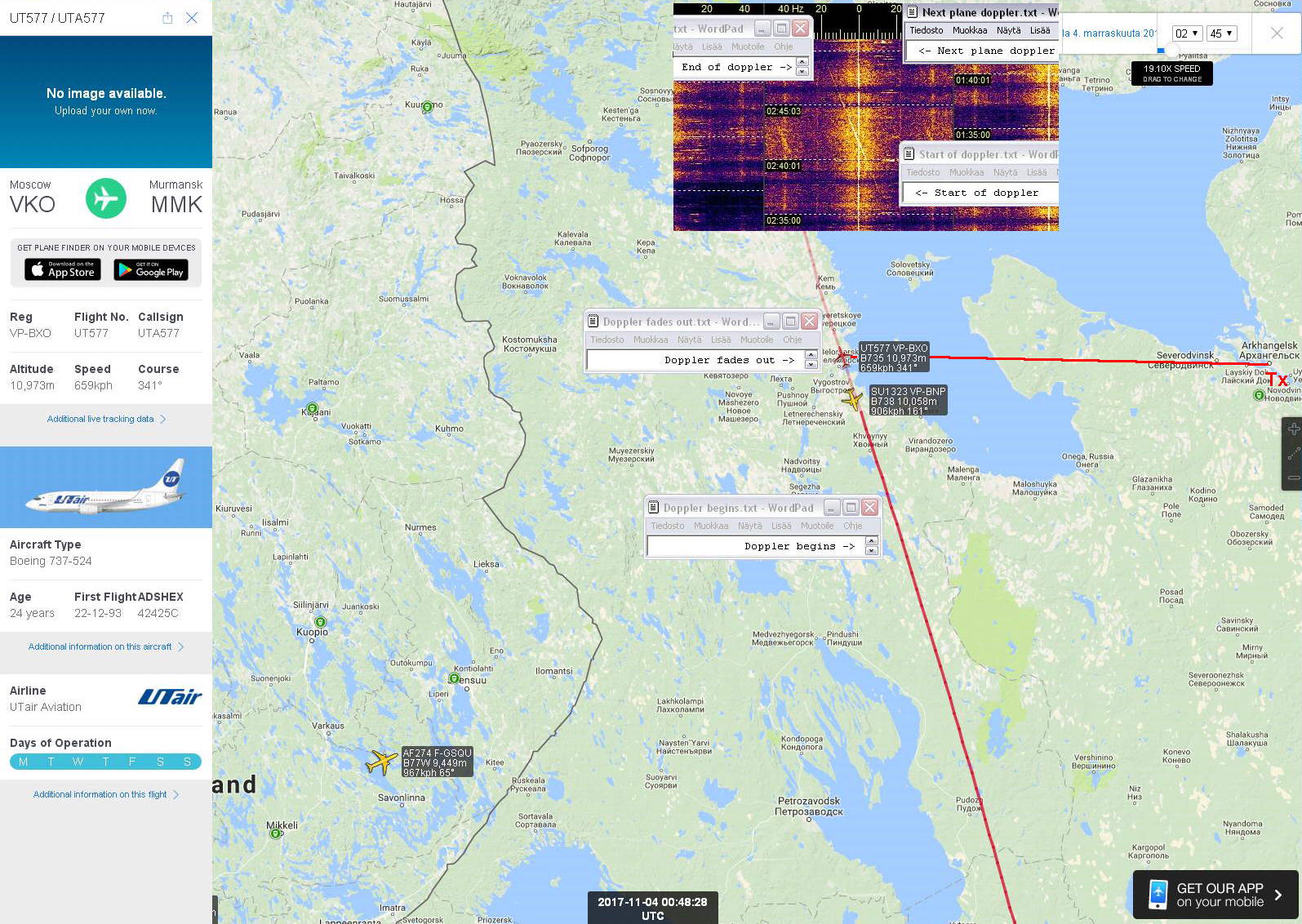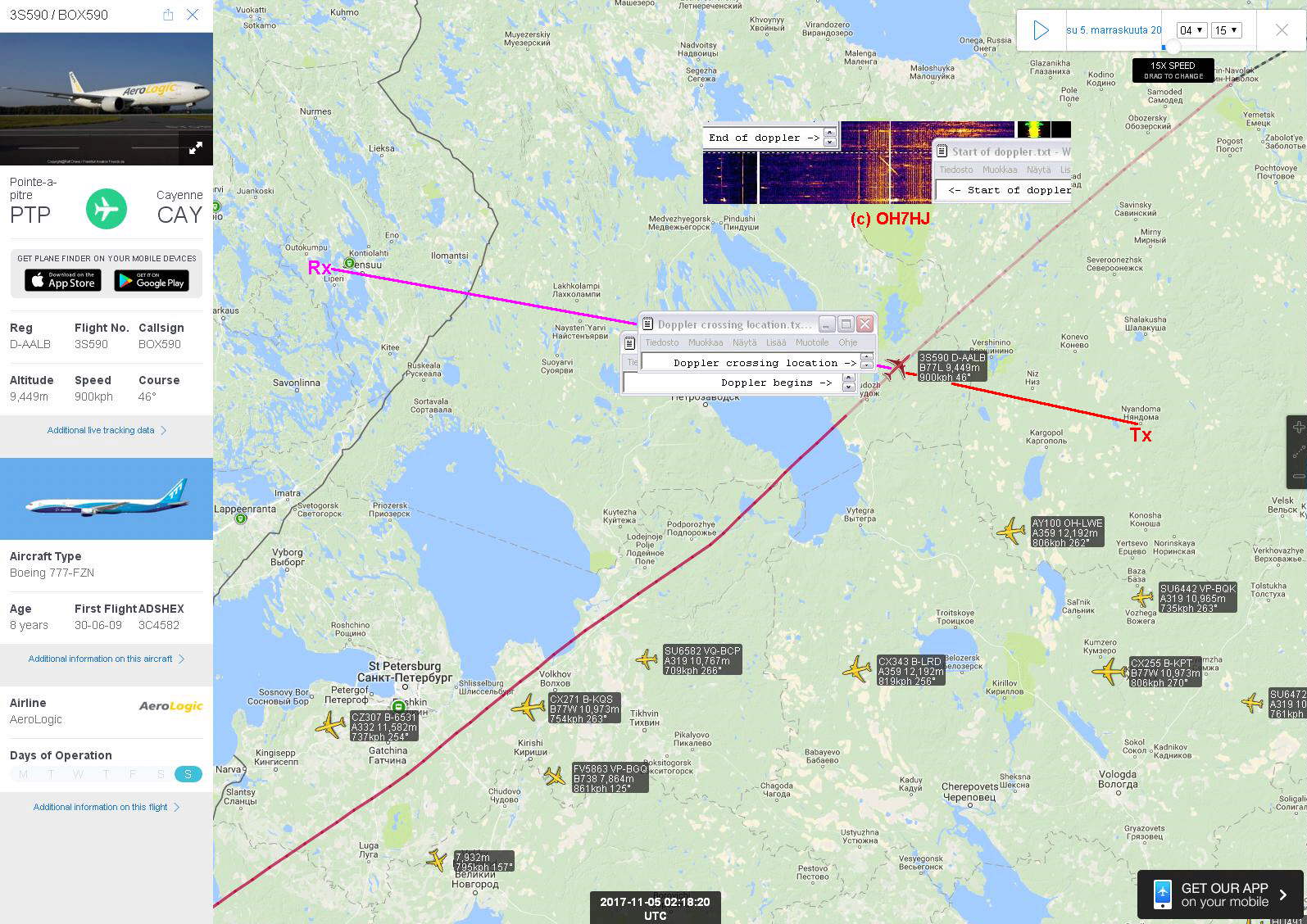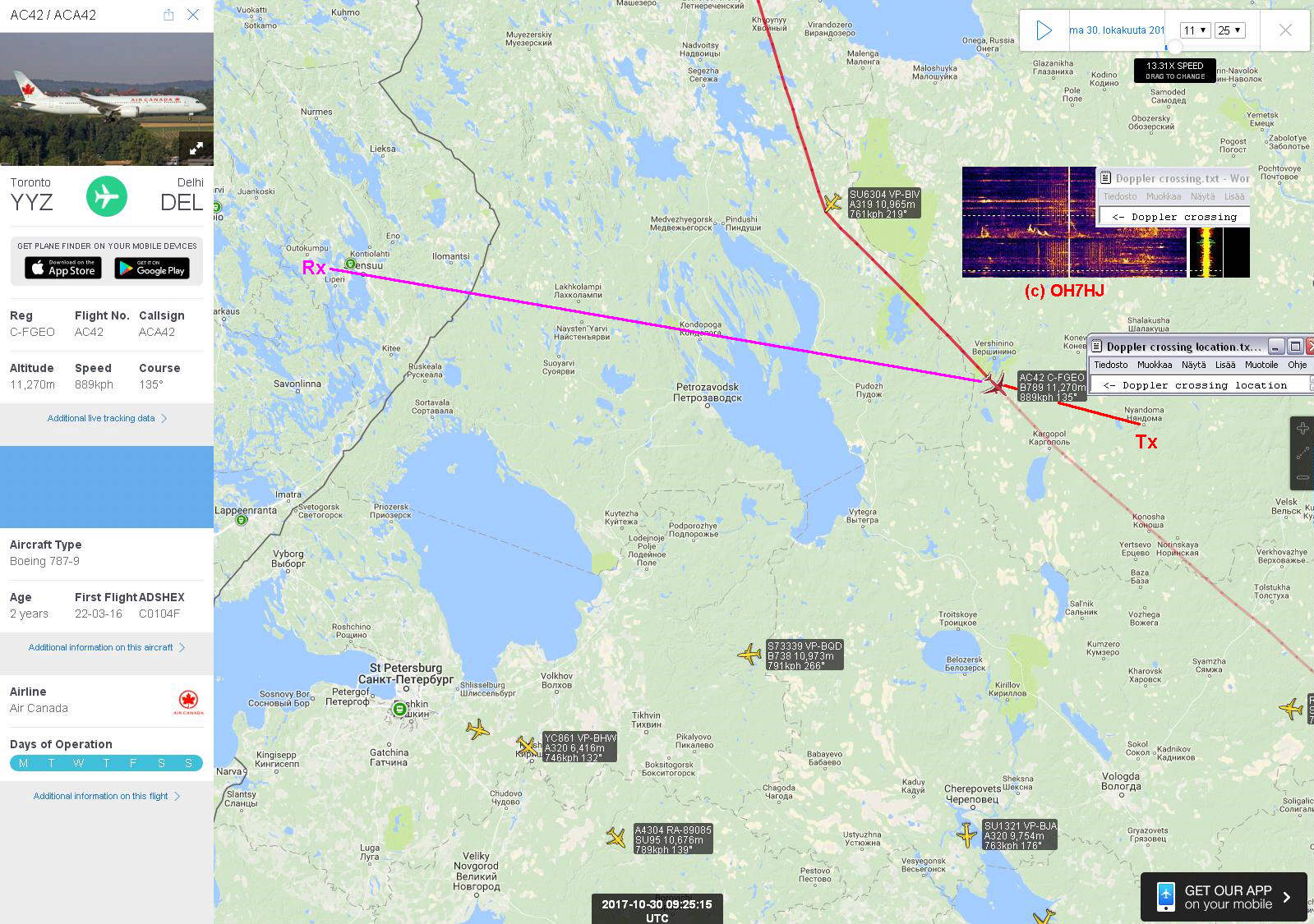Most of these Moscow TV aircraft scatter (AS) dopplers were from near the Rx-Tx baseline midpoint which is within common radio horizon of Rx and Tx for high flying aircraft. However, among these usual dopplers were some very short dopplers that were plotted at too steep angle to be from usual airliners. Steep doppler angle at baseline midpoint would mean aircraft crossing at supersonic speed. It was not likely that there would be many supersonic flight so evidently something else should cause these yet unknown dopplers.
With most cases of the unknown steep dopplers there was no aircraft scatter explanation for them in the usual area of reception of Moscow TV baseline midpoint. Plotted doppler baseline crossing angle is steep close to Rx or Tx, and mild far away from them.
Supersonic flights is not practical explanation so another reason for steep dopplers might be aircraft crossing baseline closer to Rx or Tx. That meant that the unknown dopplers might came from somewhere else than near Moscow TV baseline midpoint that is within or near common radar horizon from both Rx and Moscow TV Tx. The problem about close to Rx or Tx baseline AS crossings is that the aircraft would be far away from the supposed VHF radar range limits of Rx or Tx radio horizons.
Seeking for Steep Doppler Origin
First, I checked 26 of these unknown steep dopplers on Moscow freq from during about 2 days with Planefinder playbacks and found that in 14 cases of 29 unknown steep dopplers there were no planes near the baseline midpoint area of usual visible Moscow crossings. In the cases of aircraft near the area of visible crossing, there usually was usual mild aircraft doppler for it showing separately from the unknown steep doppler.
Antti OH7DI has previously introduced bistatic radar equations showing that strongest bistatic scatters appear with planes near Rx or Tx. In this case planes over Moscow Tx are far out of radio horizons of each other as the Moscow TV Tx is abt 892 km away from Rx. It is also known that aircraft crossing Rx-Tx baseline closer to Tx or Rx plot steeper dopplers than those crossing near midpoint of baseline.
To check if these mystery steep dopplers could somehow propagate over-the-horizon (OTH) from somewhere near Moscow Tx maybe with help of signal boosting baseline forward scatter effect and occasional tropo scatter, I added a check of close to Moscow district to this survey. Not really believing that these crossings could propagate from so far away.
Plane Crossings from Near Moscow…!
The results of plane search appeared suprising. There indeed was a plane on the Rx-Tx baseline in 23 of the 26 cases of these unknown steep dopplers.
The spot was on an almost transverse to baseline air route crossing Rx-Tx baseline near city of Kolakovo about 135 km before Moscow. This crossing point appeared to be close enough to Moscow TV Tx to produce about as steep dopplers as these observed unknown dopplers.
Regarding scientific credibility, the trouble with these findings is that the point of crossings is far beyond receiver radar horizon. It would mean that observed aircraft dopplers propagate from a radar range of about 757 km. That is a clearly over-the-horizon (OTH) observation which has this far been not supposed to regularly happen on VHF…!
Reasons Contributing to OTH Observation
If these really are over the horizon crossings, then we need to explain what would bring so distant low VHF band aircraft dopplers visible. It might be a combination of these favourable factors:
- Very high ERP power of Moscow TV Tx,
- baseline forward scatter effect that increases AS doppler signal level by 20 … up to 30 dB,
- recently configured high resolution Spectrum Lab receiving FFT settings,
- help of occasional tropo scatter, and
- the rather large 12-element receiving yagi array.
I remember having seen a few such steep short dopplers with the previous Moscow TV receiving arrangement but back then with the default wide band receiving Spectrum Lab FFT settings they were not yet sharp and regular enough to catch attention like they now are.
With the powerful 6-over-6 6m receiving yagi array and with the Spectrum Lab FFT settings improved sensitivity of reception the Moscow TV carrier is now visible and plotting practically continuously on its strip. With earlier smaller receiving aerials Moscow TV plotted without visible carrier as a chain of those short and wide electric discharge scatters (EDS) only on its spectrum strip.
Baseline Forward Scatter Effect
The forward scatter effect of baseline crossing is experimentally known to momentarily increase aircraft scatter doppler intensity up to the level of the TV carrier itself, or sometimes even a little stronger than the carrier.
Because the Moscow TV carrier is now practically constantly visible at Rx Spectrum Lab strip, it may be possible that the forward scatter baseline effect boosted crossing are momentarily as strong as the TV carrier, which would bring them visible from over the horizon distance of 757 km from receiver.
Bistatic range of this forward scatter observation is not increased because the crossing occurs right on the 892 km Rx - Moscow TV Tx baseline.
OTH Crossing Screenshots
Below are examples of many of similar crossings near Kolakovo. First attachment illustrates Rx-Tx baseline near receiver (Rx) and near Moscow TV transmitter (Tx) shared to two Planefinder playback maps. Map at left shows that there appear no aircraft near the usual crossing point of baseline midpoint area. Map at right shows aircraft crossing baseline near Kolakovo, abt 757 km from Rx and 135 km from TV Tx in Moscow. Its steep doppler crossing at SL strip shows at right. Pic: 2017-09-28-1554 FT - PF playback - Moscow TV ant Y12H 140 - Steep doppler - No aircraft near baseline midpoint - OK191 near Kolakovo © OH7HJ.JPG
Next attached screenshot shows another example of a plane crossing Moscow carrier near Kolakovo with simultaneous steep doppler. Baseline and range from receiver (Rx) to this crossing point are marked on the map at left: 2017-09-28-2242 FT - PF playback - Map of crossing point on baseline - Moscow TV ant Y12H 140 - Steep doppler - Aircraft near Kolakovo 757 km away © OH7HJ.JPG
Third pic shows Rx - Tx baseline on map with its midpoint near Boksitogorsk and the steep doppler baseline forward scatter crossing point near Kolakovo marked: Moscow TV Rx-Tx baseline length 892 km 145 degr KO85TT Tx from KP42QP Rx - Kolakovo forward scatter crossing point © OH7HJ.JPG
Regards,
Links
Online multi-static radar screenshot archive for doppler originals: maanpuolustus.net/muut/tutka/kuvat/
AS dopplers on Moscow TV carrier - Part 1: oh7ab.fi/foorumi/viewtopic.php?f … =120#p1912
AS dopplers on Moscow TV carrier - Part 2: Facebook OH7AB
AS dopplers on Moscow TV carrier - Part 3, 469 km: viewtopic.php?f=21&t=295&start=150#p2359
Spectrum Lab Manual: qsl.net/dl4yhf/speclab/index.htm
2 x 6 -element 50 MHz yagi array for AS doppler spotting: oh7ab.fi/foorumi/viewtopic.php?f … t=30#p1852
Locator map for measuring distances and baselines: no.nonsense.ee/qth/map.html
Planefinder: planefinder.net/#
Natural Scatters
Radar Aurora Compared to Sodankylä Magnetogram - Part 1. openstreetmap - ilmaisia karttoja!
Radar Aurora Compared to Sodankylä Magnetogram - Part 2. openstreetmap - ilmaisia karttoja!
Electric Discharge Scatter EDS - Yläsalamat aiheuttavat radioheijastuksia viewtopic.php?f=21&t=295&start=100#p1782
TV-lähetteitä aurorassa ja ES-kelissä viewtopic.php?f=21&t=295&start=100#p1892
Natural EDS ‘Doppler Hooks’ may be scatters of spreading high altitude lightnings:
‘Dopplerkoukkuja’ Moskovan TV:n jaksolla - Osa 1. viewtopic.php?f=21&t=295&start=100#p1893
‘Dopplerkoukkuja’ Moskovan TV:n jaksolla - Osa 2. viewtopic.php?f=21&t=295&start=110#p1900
‘Dopplerkoukkuja’ Moskovan TV:n jaksolla - Osa 3. viewtopic.php?f=21&t=295&start=110#p1901
‘Dopplerkoukkuja’ Arkangelin TV:n jaksolla - Osa 4 viewtopic.php?f=21&t=295&start=110#p1903
‘Dopplerkoukkuja’ Pietarin TV:n jaksolla - Osa 5 Facebook OH7AB
Aurora and EDS - Radiorevontulia ja sähkönpurkausheijastuksia 6m bandilla - 1.
viewtopic.php?f=21&t=295&start=140#p2250
Radiorevontulia ja sähkönpurkausheijastuksia 6m bandilla - 2 viewtopic.php?f=21&t=295&start=140#p2289
Tavallisia sähkönpurkausheijastuksia (EDS) viewtopic.php?f=21&t=295&start=140#p2251
Yläsalamapurkauksen synnyttämä ukkos-Es-keli viewtopic.php?f=21&t=295&start=110#p1895
50 MHz Es-keliavauksia viewtopic.php?f=21&t=295&start=140#p2248
50 MHz Es-keliavauksia - osa 2. viewtopic.php?f=21&t=295&start=140#p2249

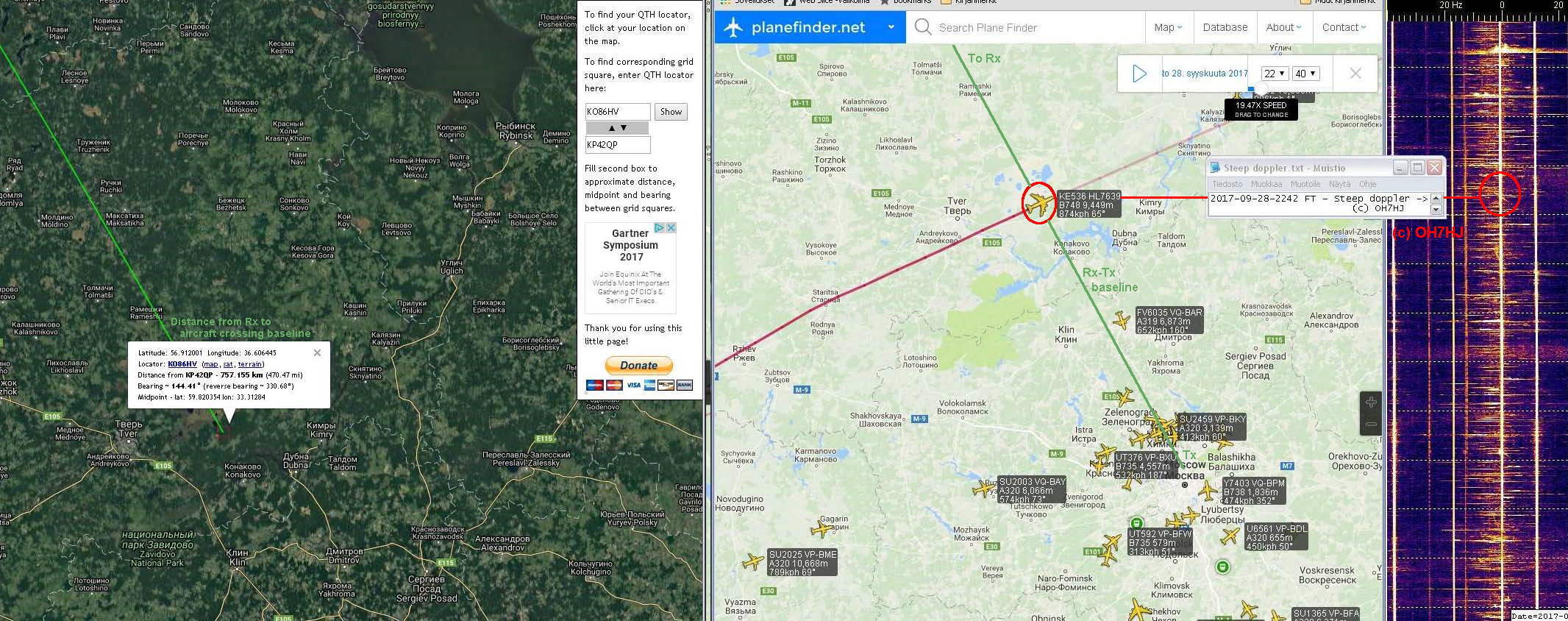
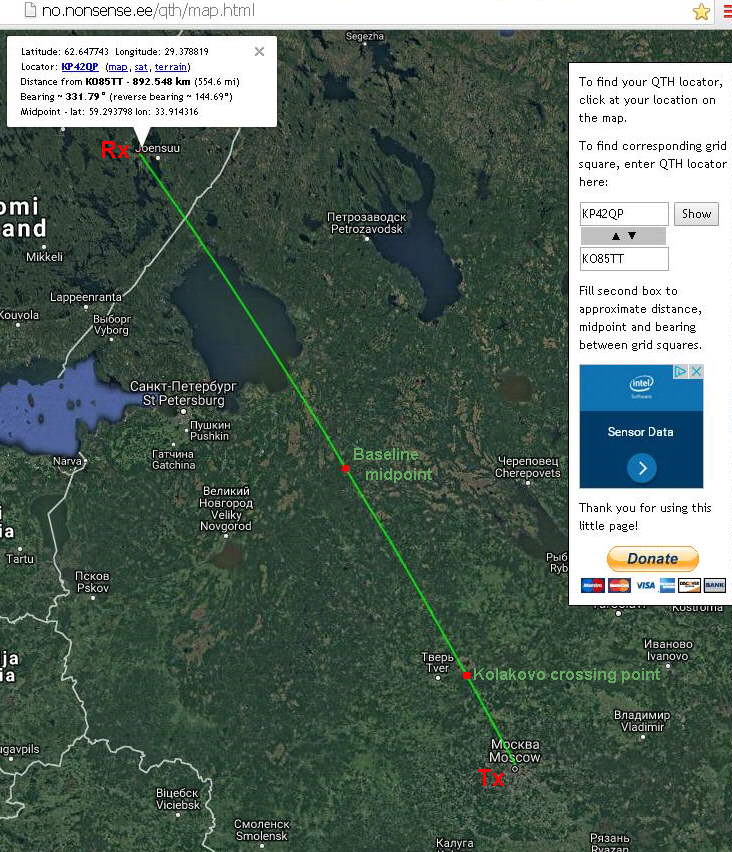
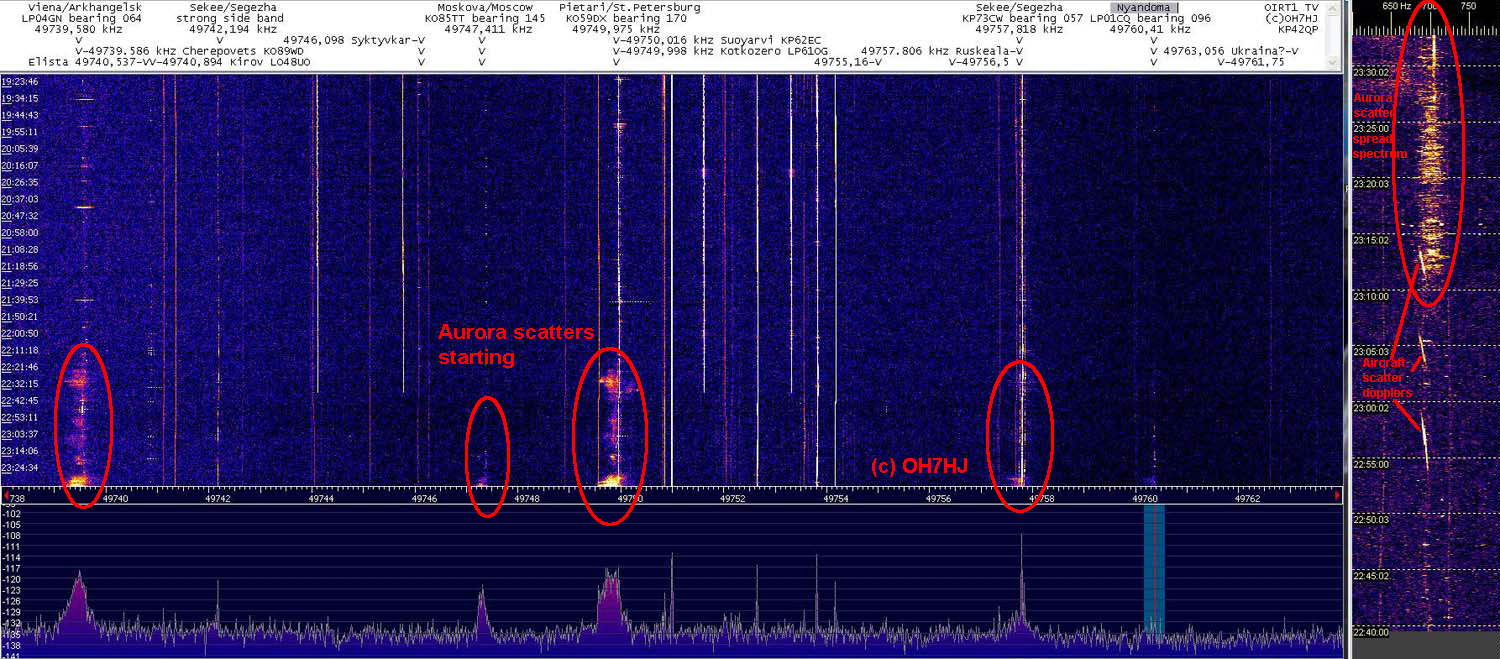
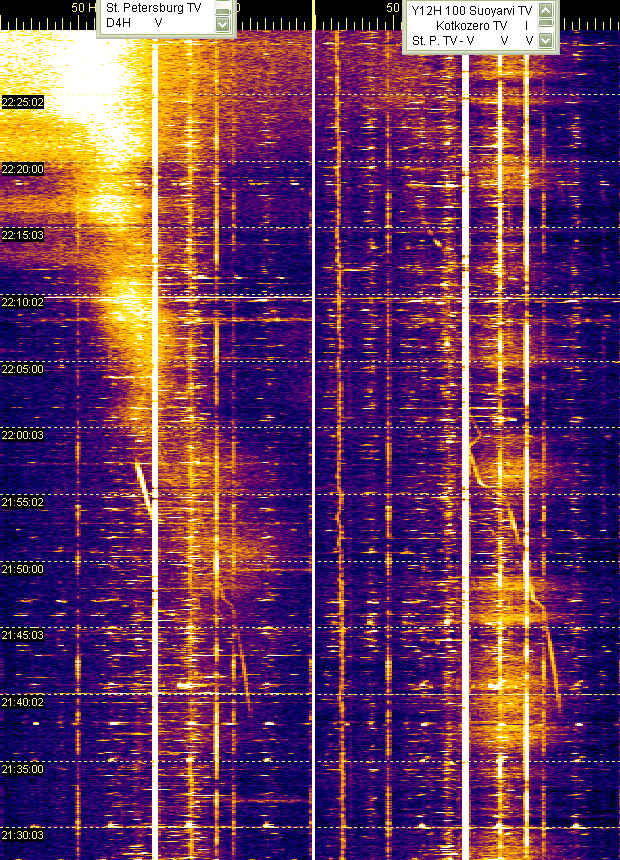
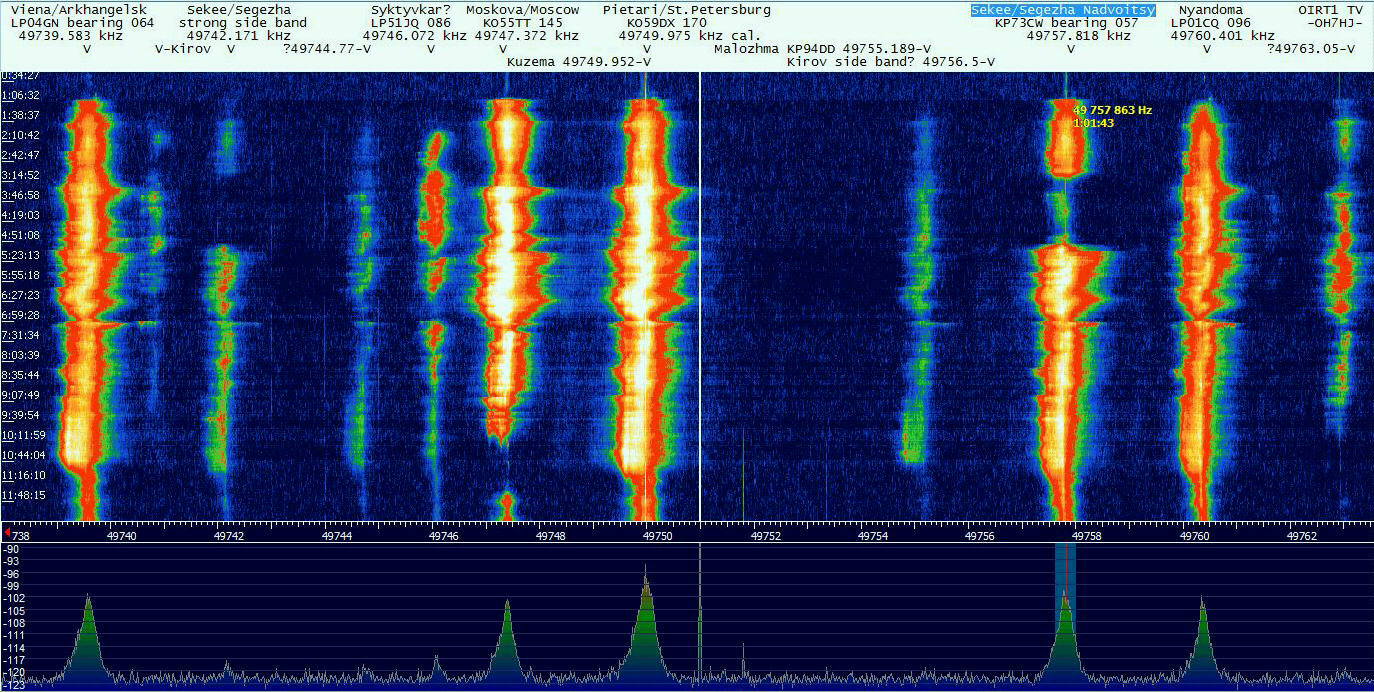
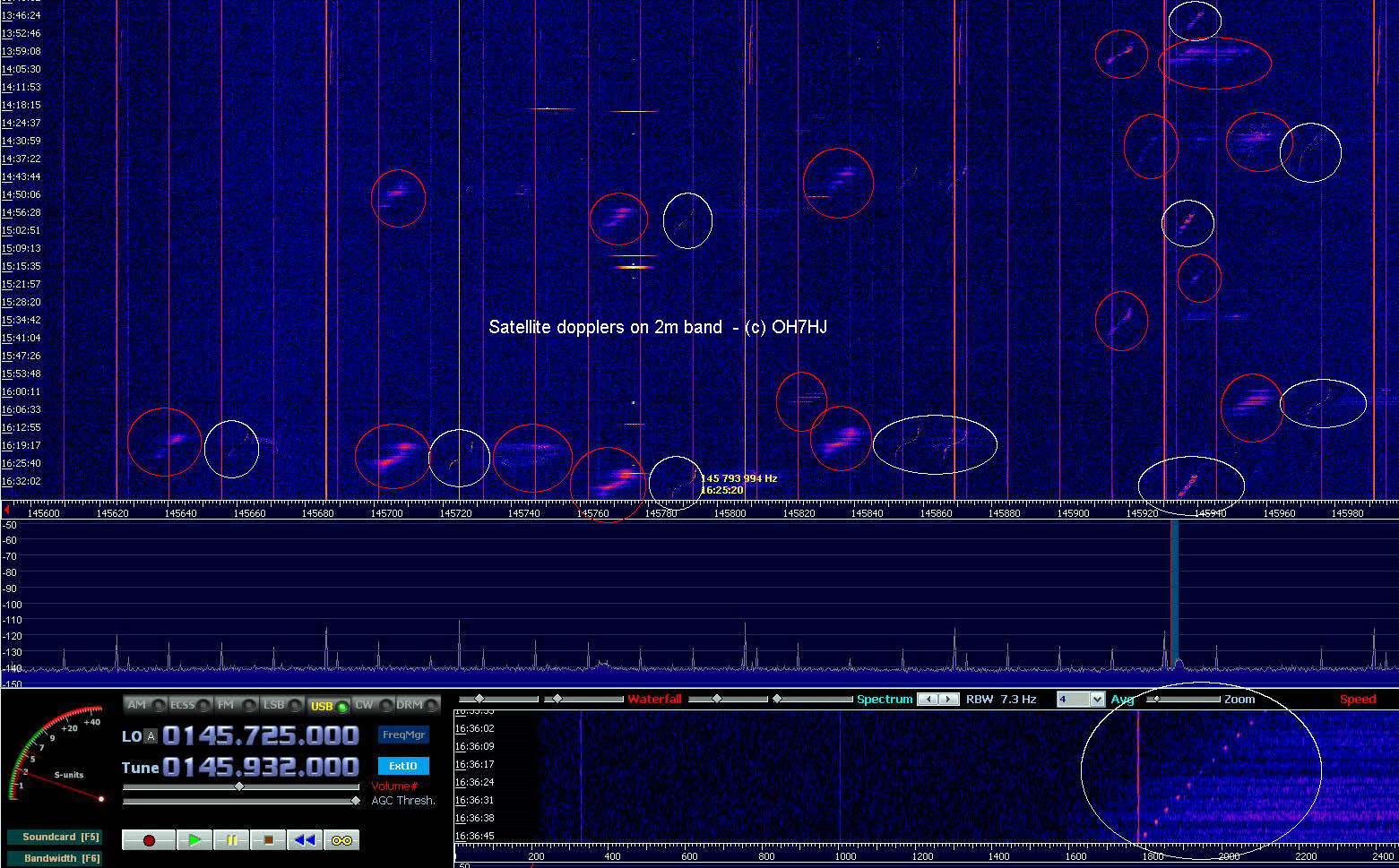
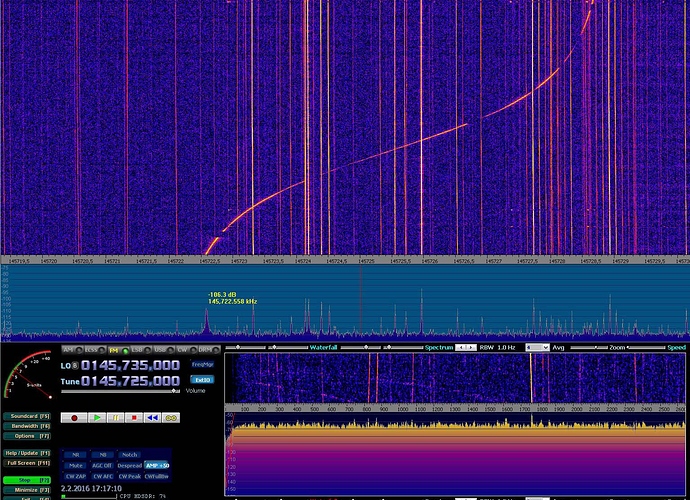
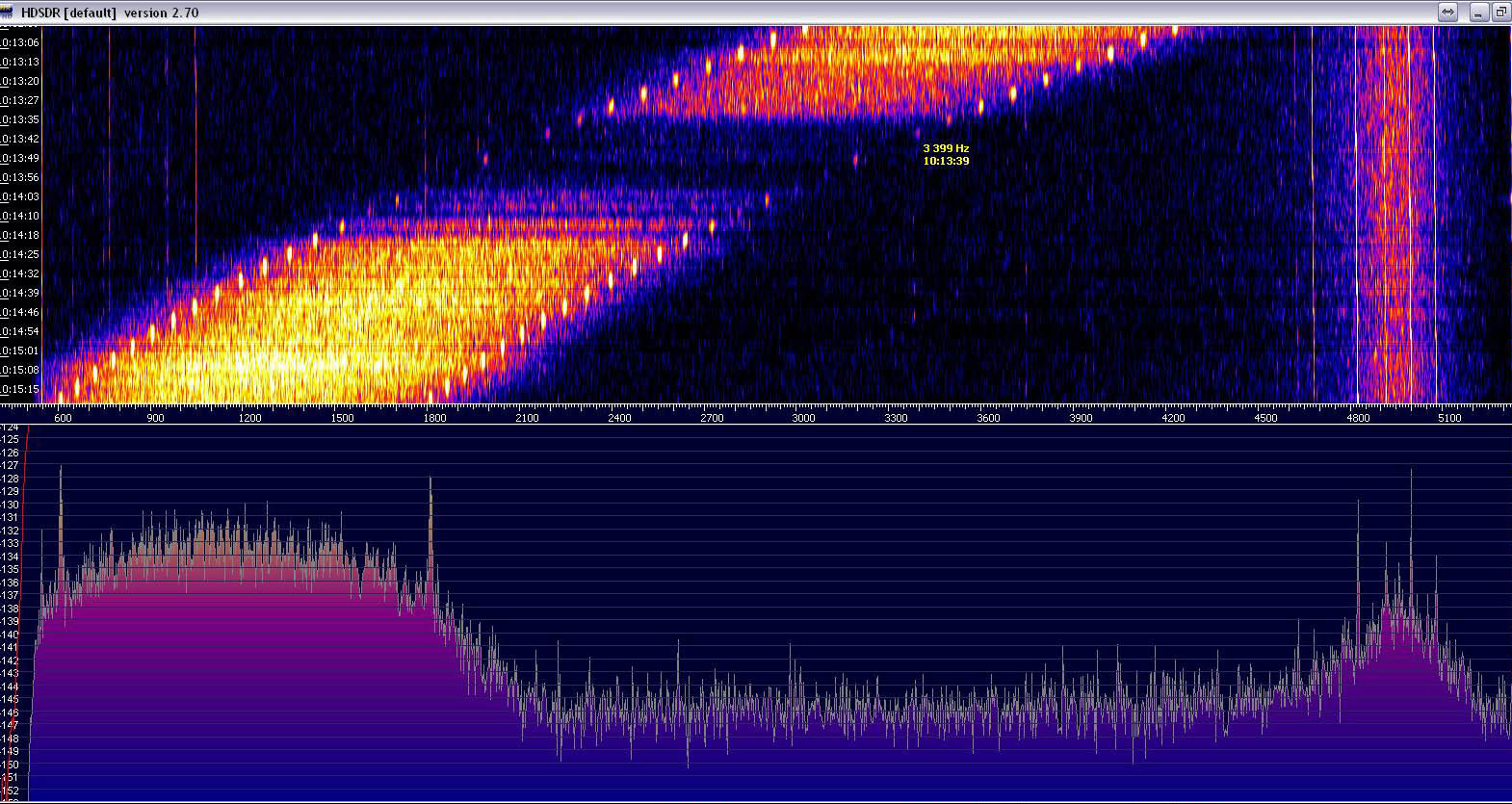
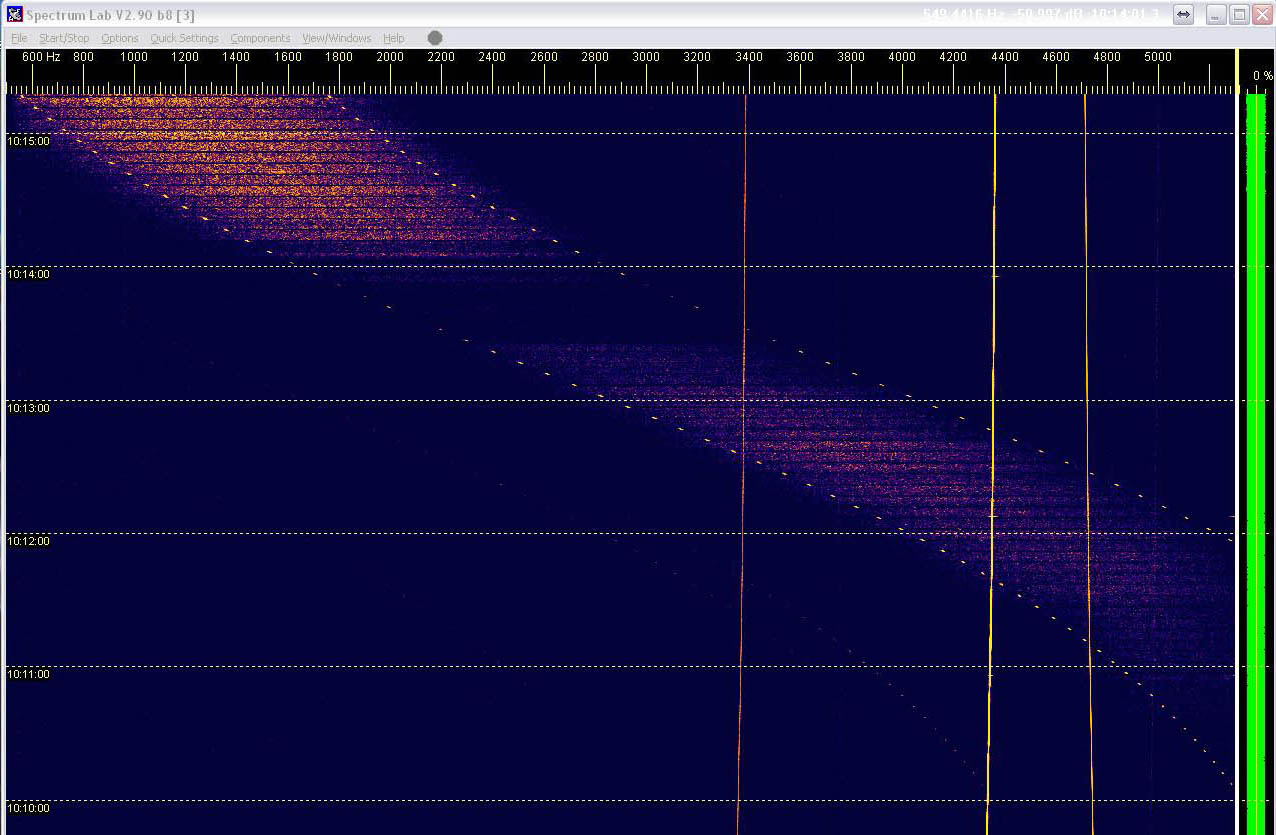
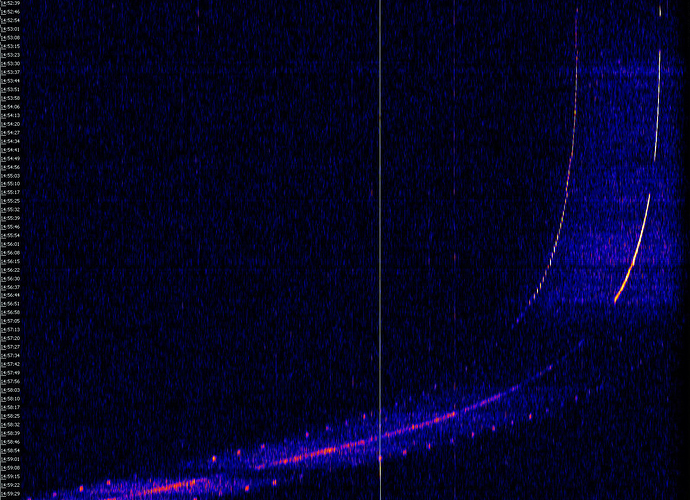

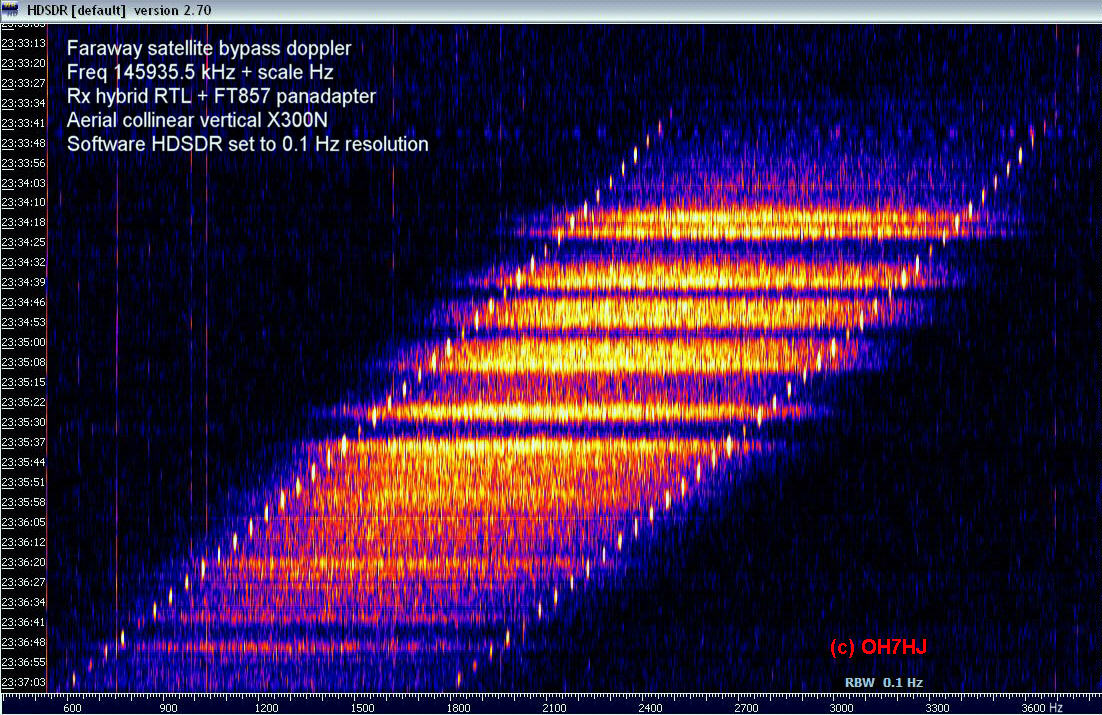
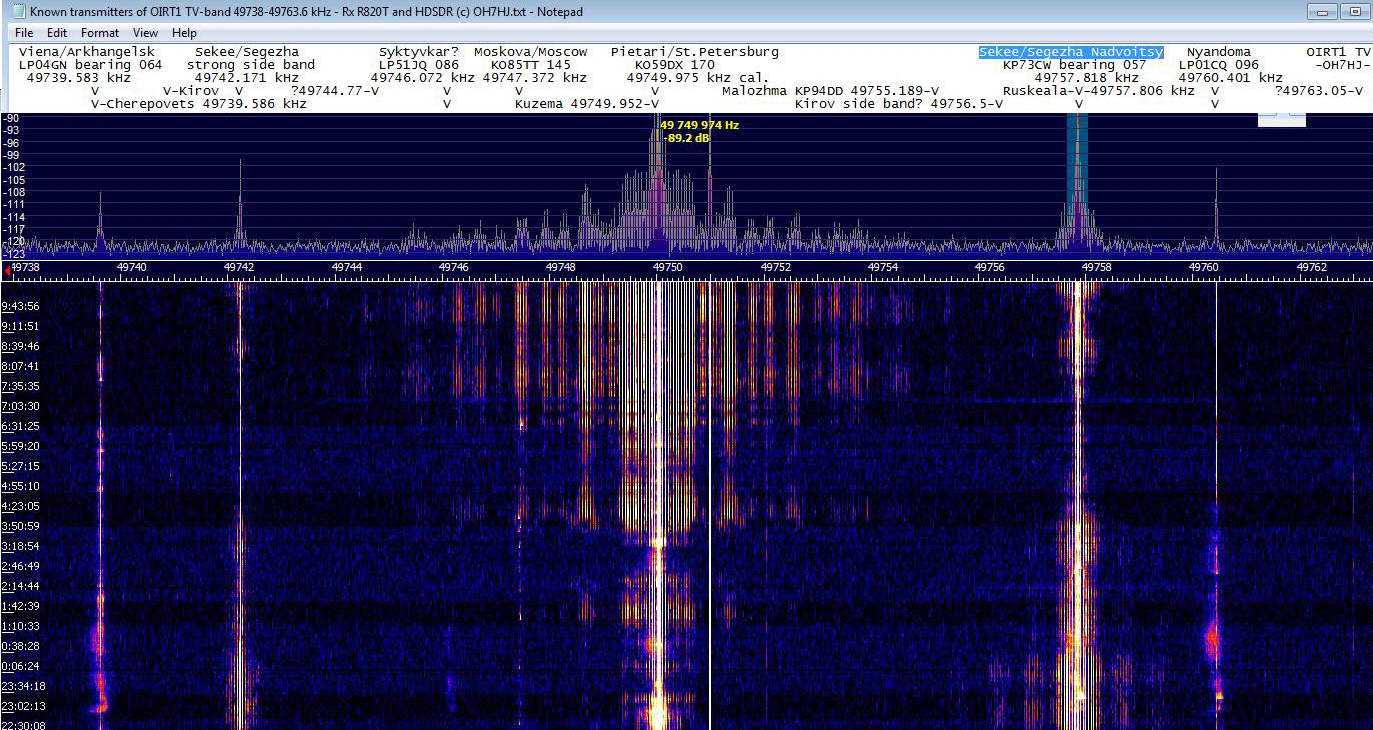
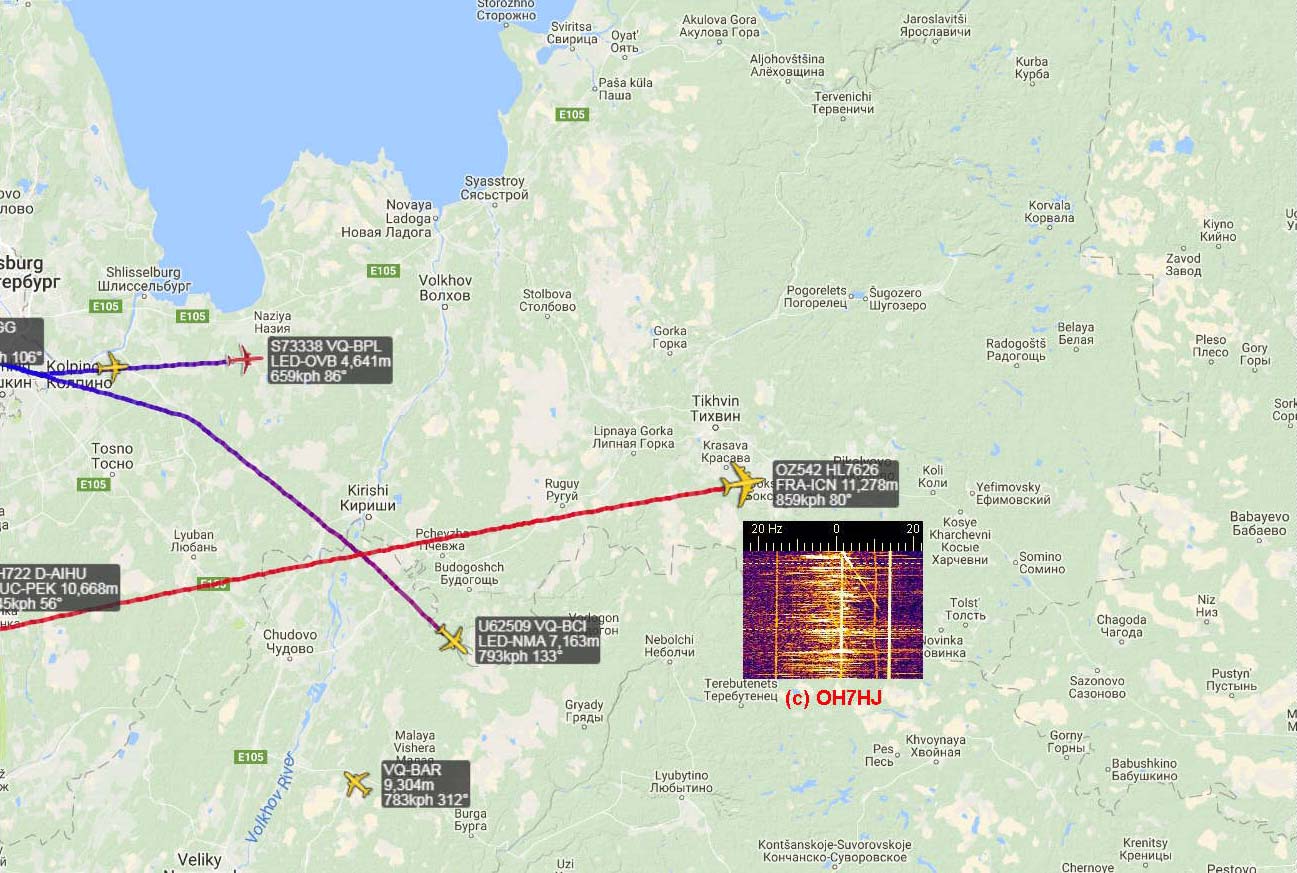
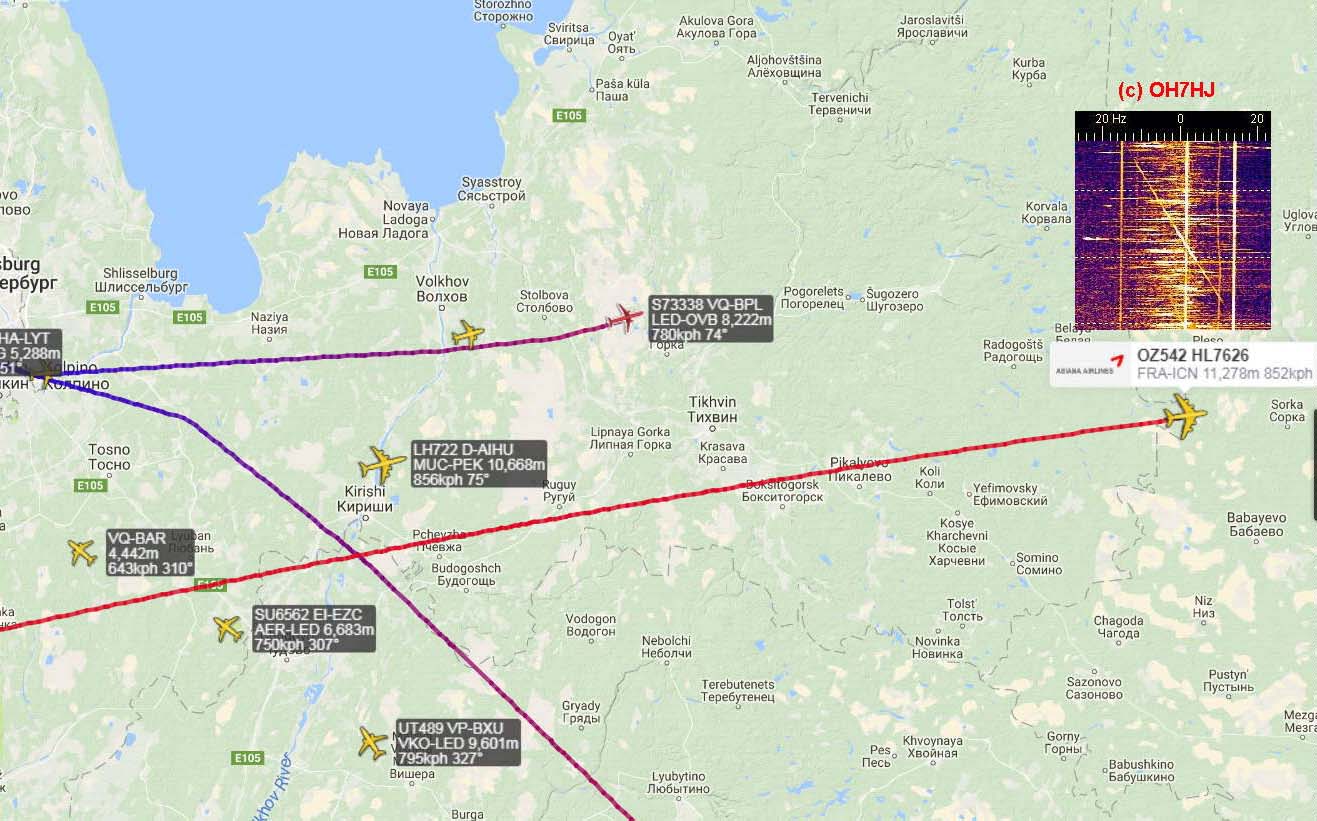




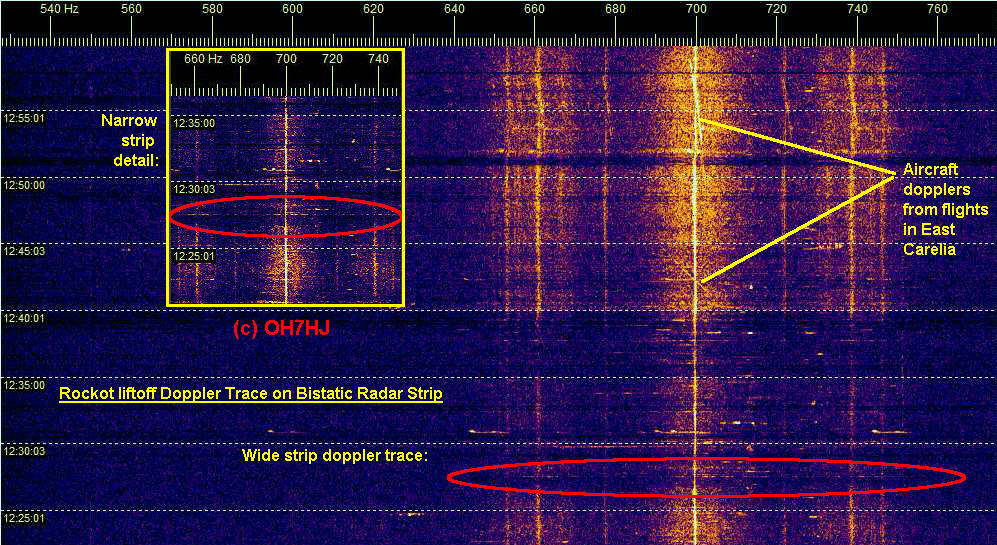
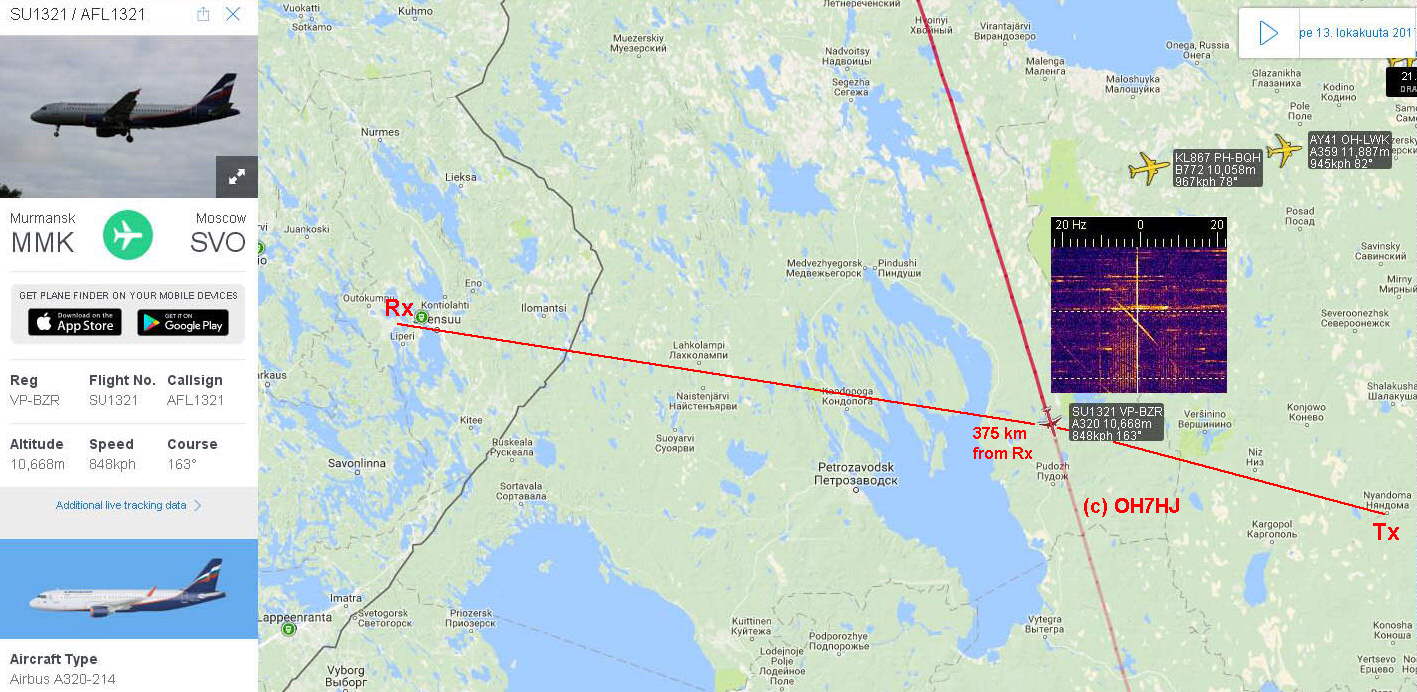
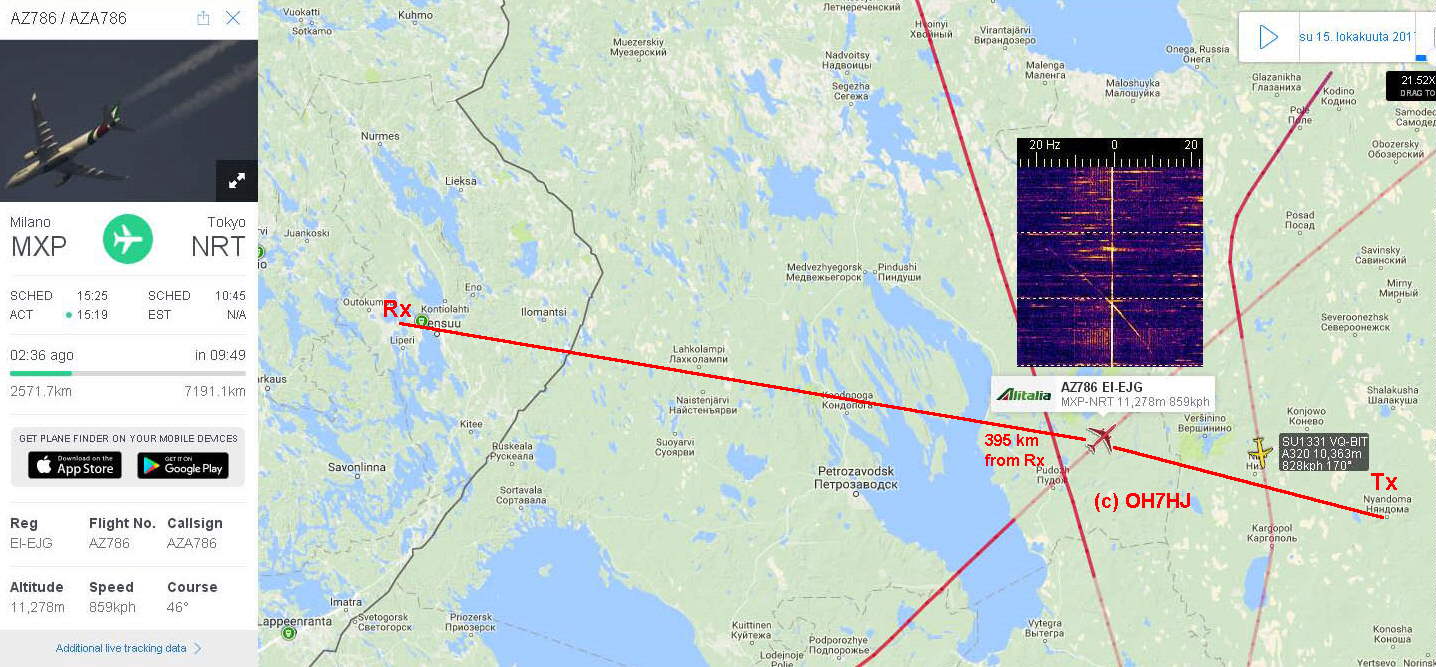

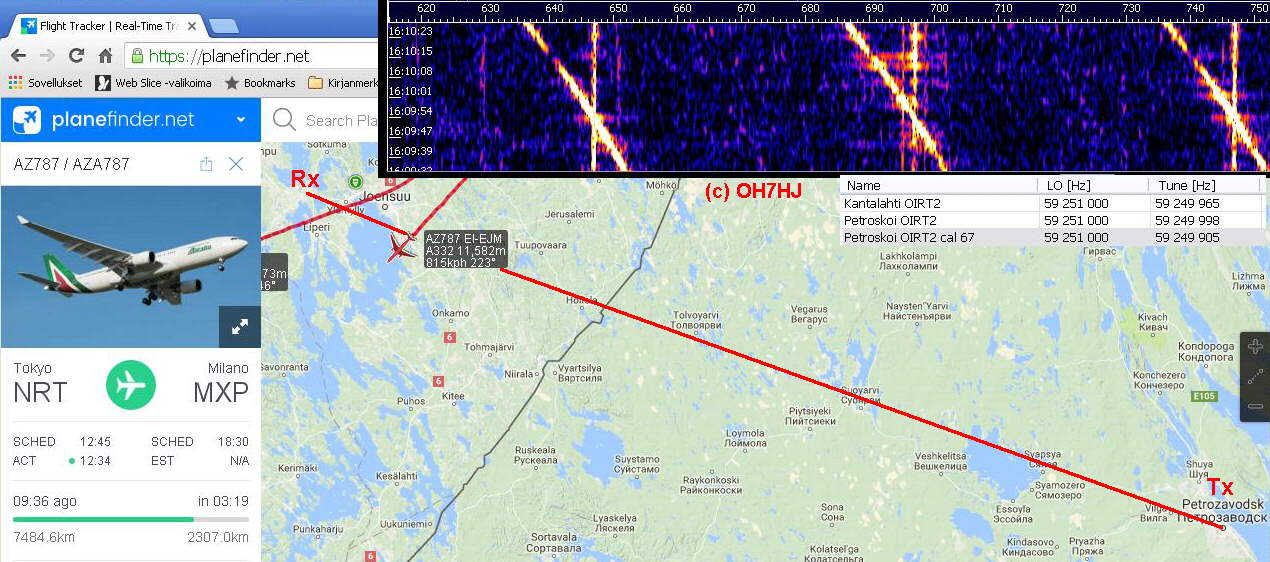
 Antennina on 6-yli-6 vaakajagi suuntaan 100 astetta.
Antennina on 6-yli-6 vaakajagi suuntaan 100 astetta.
